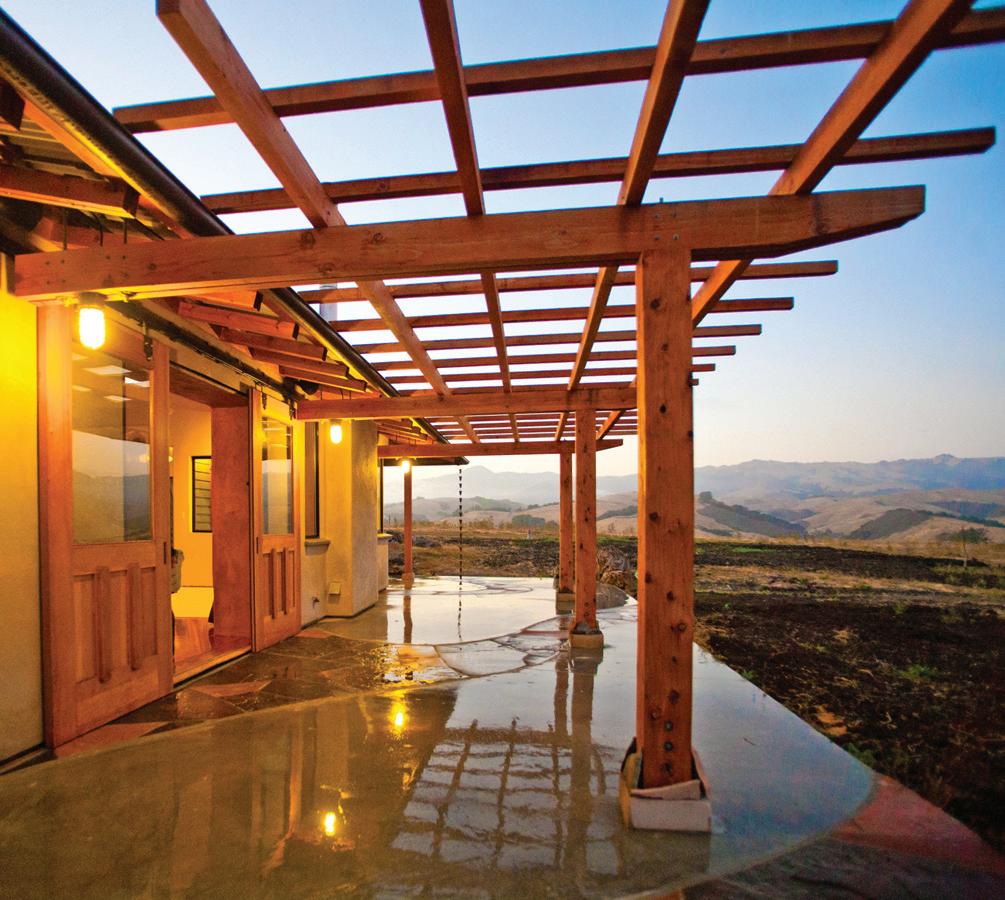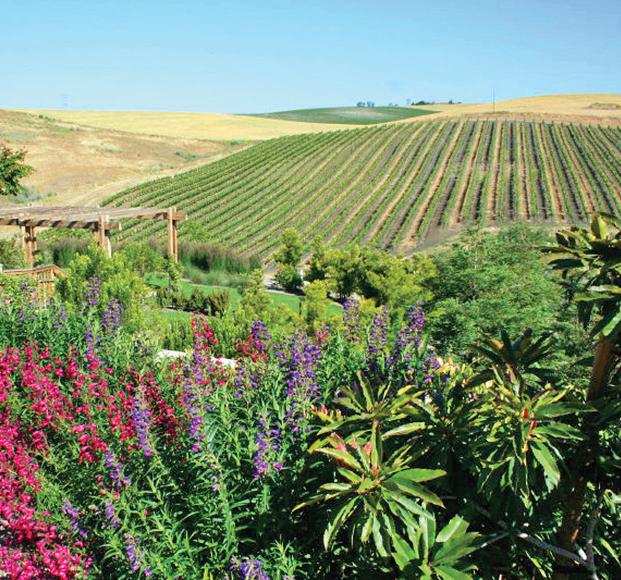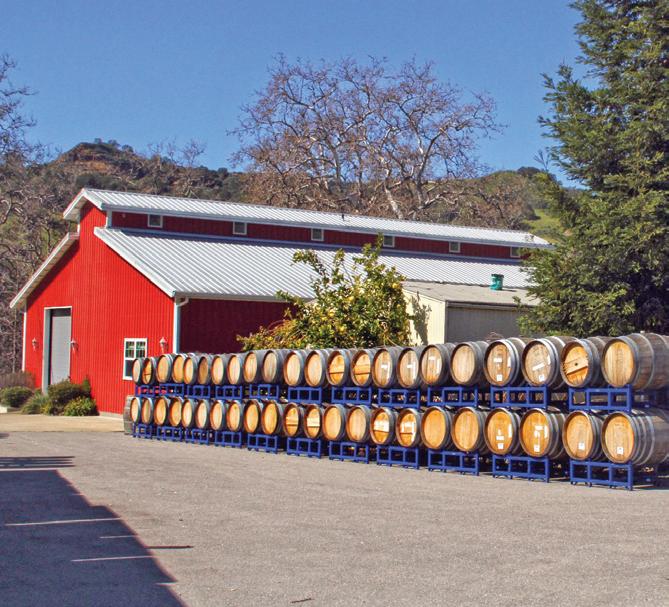




































Sometimes you just have to lay down the law.
At least that is what I thought we were doing when we implemented a new parenting technique at our house recently. When we called the kids together for a family meeting to explain what was going on, there was a lot of concern and a lot of questions. Our kids had picked up a few bad words on the playground, and we needed to take immediate action. We told them that we had set up a mason jar in the kitchen where coins would be deposited when someone used “colorful language.”
The concept was pretty simple, really. Say a bad word, deposit a quarter in the jar. Our kids—ten, eight, and four years old—caught on quickly and all agreed that it would be a major bummer to have to spend their hard-earned dough this way, particularly since allowance is just a buck a week.
Things started off well and the empty mason jar looming in the corner proved to be a major deterrent. Finally, one day someone slipped up. I can’t remember who it was, but a deposit was made. The quarter’s distinctive ping rattling around the glass was like the shot heard around the world at our house. It didn’t happen very often, so I thought the whole thing was going pretty well… until the kids began to apply the rules to me.
Although we live in the Happiest Place on Earth, some days are happier than others. I can almost hear the old John Denver 8-track tape my parents used to play: Some days are diamonds, some days are stone. My kids shifted the balance of power on one of those days that the bespectacled country boy would have put under the column marked “stone.” Frustrated by something, I just couldn’t help myself. No sooner than the four-letter word had left my lips, I heard my daughter say, “Uh, dad, that was a bad word. You should have to put money in the jar.” I looked up to see her brothers nodding their heads in agreement. “What?!” I exclaimed in mocking disbelief, “that’s bull$*&#!” We all busted up in laughter. Seizing the moment, and hoping to turn the day into diamonds, I let a few more colorful words of protest fly, this time with a heavy dose of dramatic flair. My little stand-up comedy routine had set me back $1.75.
Recognizing that I was potentially a cash cow, the kids began watching my every move. The slip-ups were starting to take their toll, and I noticed that my behavior began to improve. I was tired of spending my money this way so I cleaned up my language and started toeing the line. But, it wasn’t until my kids had a fundraiser at their school that my karma came back to bite my dogma. Upon entering the “Penny Wars” competition, my daughter asked if she could donate the mason jar, which was now overflowing with coins.

On the last day of “Penny Wars” my daughter and her friends were in the library, each of them with their coins spread on the floor to get final counts. As the school’s PTA president made her way around the room to interview the students about how they raised the money, she stopped to talk with my daughter. “Oh, it’s from my dad. He had to put lots of money in the cussing jar.” Later that day, through a fit of laughter, the PTA president pulled my wife aside to relay the story. “But, don’t worry,” she assured, “I won’t publish it in the school newsletter.”
I would like to take this opportunity to say “thank you” to everyone who had a hand in creating this issue of SLO LIFE Magazine and, most of all to our advertisers and subscribers—we couldn’t do it without you.
Live the SLO Life!


 with Chris Bersbach
with Chris Bersbach
DAN IS A PAINTER as well as a baker, and during the cover shoot we had been talking about light and lighting. He offered a romantic description of the way the early morning sunlight passes through the steam from the oven at his bakery on the outskirts of San Luis Obispo. He suggested coming by early in the morning when they bake the baguettes to see it for myself. As you can see in the image below, he wasn’t kidding.
I HAD A FEW different ideas for incorporating flour into the cover image of Dan, to give him some context with the story of his bakery. But it wasn’t until the day we were scheduled to shoot that it occurred to me to actually throw flour into his face for the portrait. When I arrived, I was talking Dan through my process and explained that I wanted to do something with flour, but I wasn’t too specific—I usually prefer not to jump directly into odd, conceptual stuff, preferring to start simple and let my subject get used to me and my camera before I ask them to do anything really out there. But Dan’s a creative guy, and he beat me to the punch. As soon as I brought up using flour in a non-specific manner, he volunteered that it should be all over his face. Exactly what I had been planning to lead up to.


We made these portraits at Dan’s house, in his driveway. We shot against a couple different backgrounds, and I used my usual mix of digital and film capture. Dan was an absolute blast to work with, and a really good sport about trying anything that I asked of him. By the time we were done shooting, the driveway was a huge mess with all of the flour we’d spilled, and Dan refused to allow me help him clean up any of it.
I’m still cleaning flour out of my equipment.

Have some comments or feedback about something you’ve read here? Or, do you have something on your mind that you think everyone should know about? Let us know! To have your letter to the editor considered for publication in the “In Box” section, please email it to info@slolifemagazine.com. Be sure to include your full name and city. And, it’s best to keep it to 250 words or less.
Our advertisers get great results and we would like to tell you about it, but first we want to know about you and the objectives of your business. Call us at (805) 543-8600 to talk with our publisher, Tom, about different advertising programs—we have something for every sized budget. Or, you can log on to slolifemagazine.com/advertise and we can send you a complete media kit and loads of testimonials from happy advertisers.


4251 S. HIGUERA STREET, SUITE 800 SAN LUIS OBISPO, CA 93401
SLOLIFEMAGAZINE.COM info@slolifemagazine.com (805) 543-8600 • (805) 456-1677 fax
PUBLISHER
Tom Franciskovich
CREATIVE DIRECTOR
Sheryl Disher
Jeanette Trompeter
Paden Hughes
Chris Bersbach
Rénee Besta
Mark Gvazdinskas
Maren Brajkovich
Joseph Dominguez
Submit your story ideas, events, recipes and announcements by visiting us online at slolifemagazine.com

Contributions chosen for publication may be edited for clarity and space limitations.
If you would like to advertise, please contact Tom Franciskovich by phone at (805) 543-8600 or by email at tom@slolifemagazine.com
So many of the stories we publish come from our readers’ great leads. We are always looking for interesting homes to profile (see “Dwelling” on page 38), have a recipe that your friends and family love? Share it with us! To get an idea, check out “Kitchen” on page 76. Is there a band we should know about? Something we should investigate? Go to slolifemagazine.com and click “Share Your Story.”

The opinions expressed within these pages do not necessarily reflect those of SLO LIFE Magazine. No part of this publication may be reproduced in whole or in part without the expressed written permission of the publisher.
Complete details regarding circulation, coverage and advertising rates, space, sizes and similar information are available to prospective advertisers. Please call or email for a media kit. Closing date is 30 days before date of issue.
Ready to live the SLO Life all year long? It’s quick and easy! Just log on to slolifemagazine.com/subscribe. It’s just $24.95 for the year. And don’t forget to set your friends and family up with a subscription, too. It’s the gift that keeps on giving!
LETTERS TO THE EDITOR info@slolifemagazine.com
4251 S. Higuera Street, Suite 800 San Luis Obispo, CA 93401
Letters chosen for publication may be edited for clarity and space limitations.




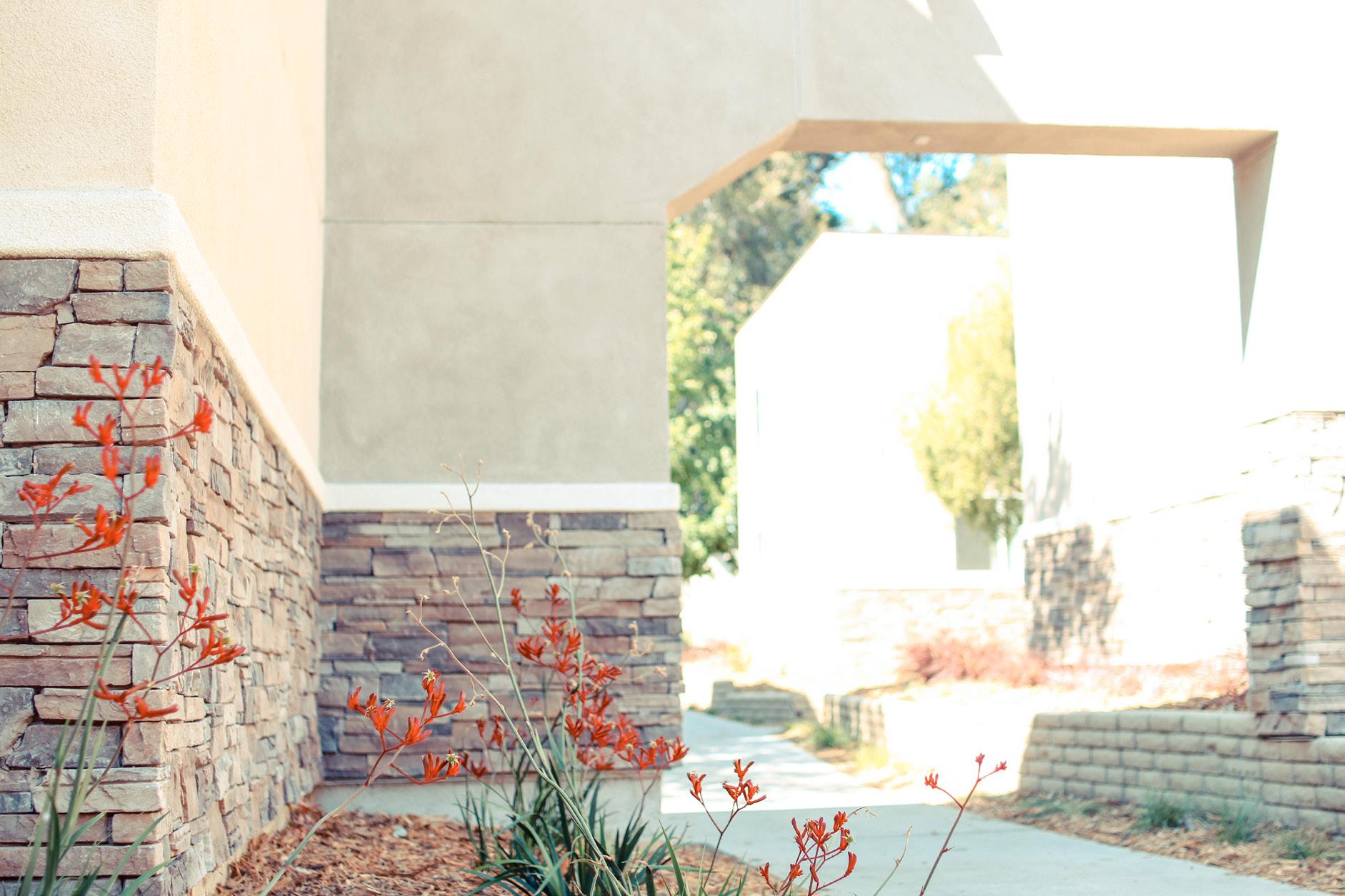
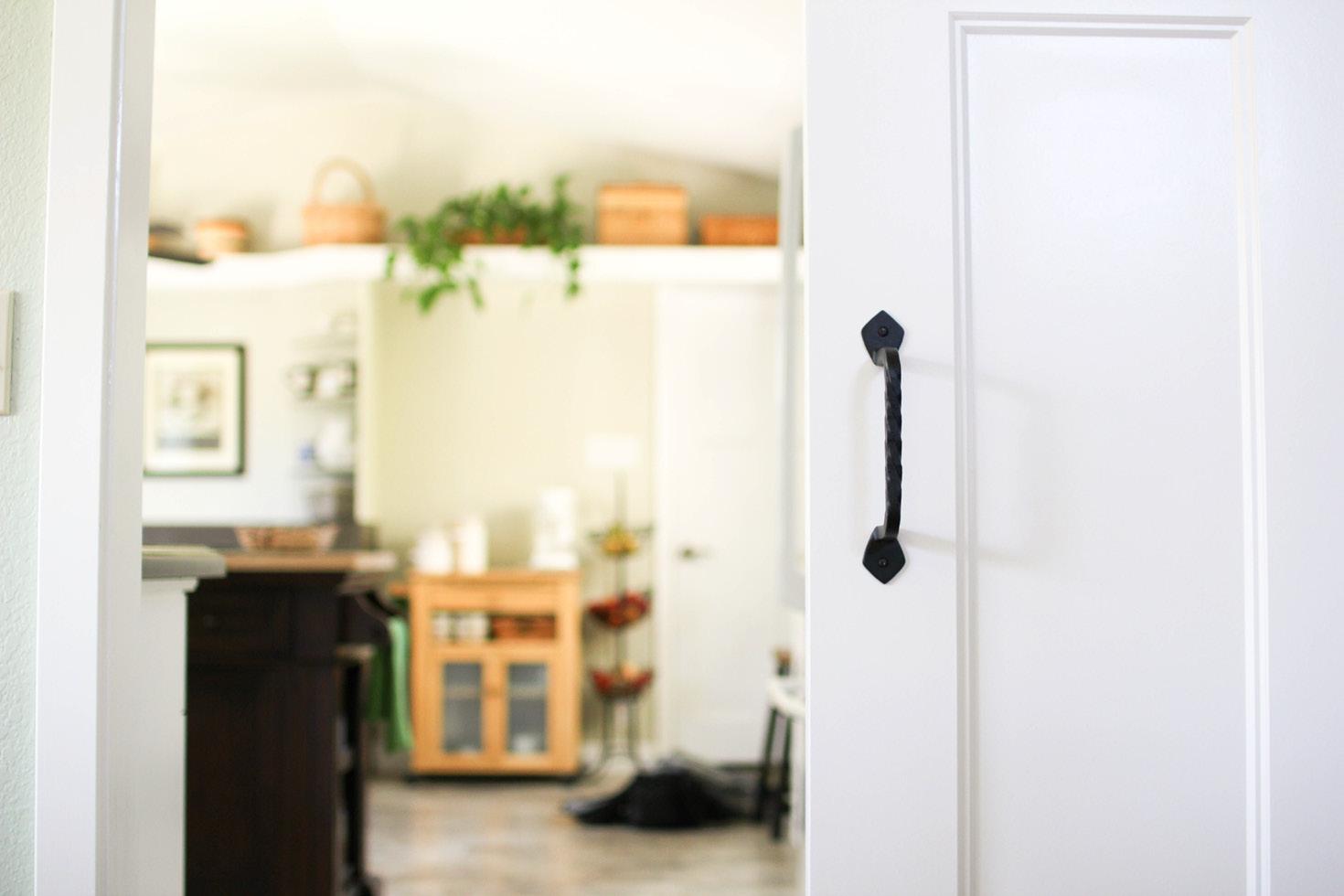
Elder Placements guides you through the difficult decision making process. After our evaluation, we take you to tour the appropriate facility that will give your parent the care and quality of life they deserve.

Whether it’s Assisted Living, Alzheimer Dementia Care or Independent Living, we do the legwork for you at NO COST.

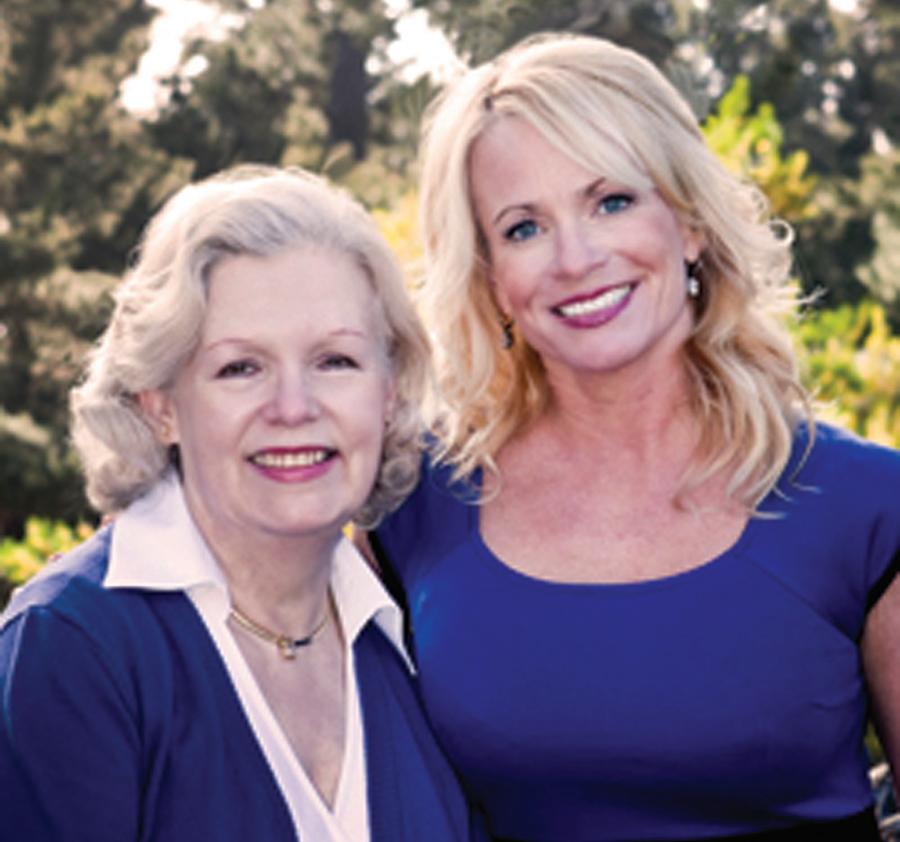
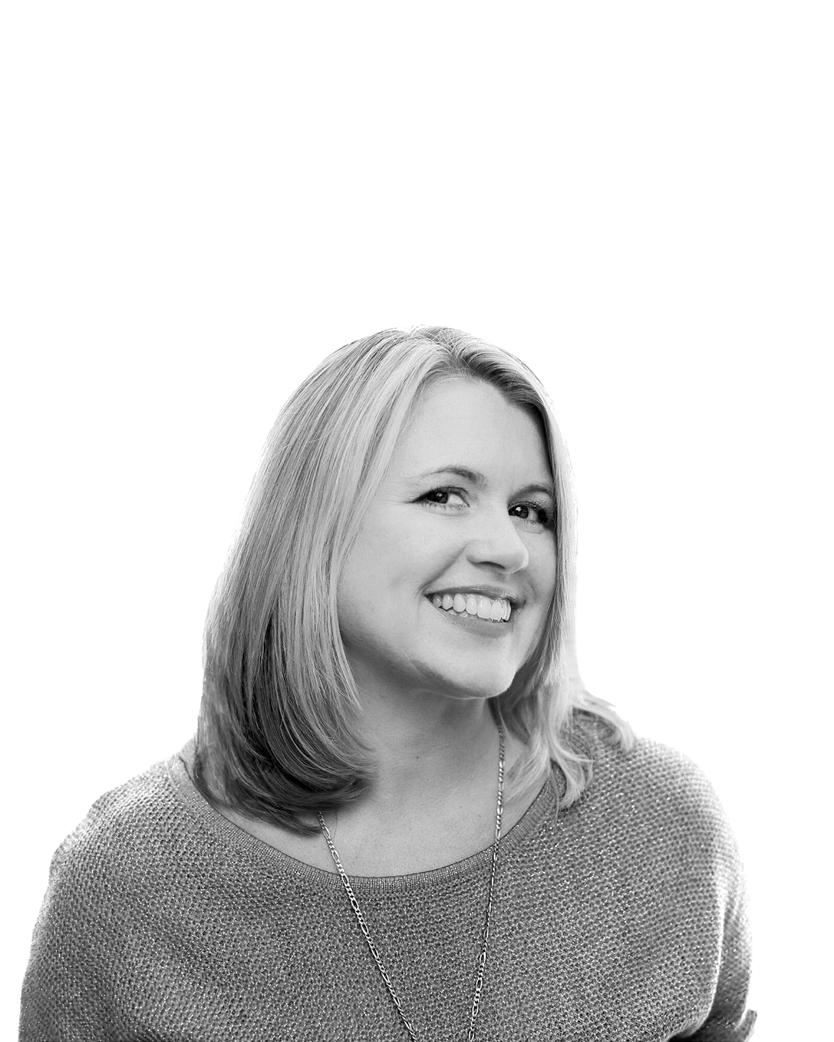

said, “We need rain so desperately that we’re willing to support cloud seeding this year.”

Dear SLO LIFE, While I appreciate all the work that went into building the 5,000 square foot house in the Edna Valley, can you guys maybe feature something that is a little more environmentally-friendly in the next issue? Thanks, Nancy San Luis Obispo
>> Thanks for contacting us, Nancy. Your comments inspired us to look around for such a story, and we found Tierra Nueva Cohousing, which should be right up your alley. Turn to page 38 and read all about it.
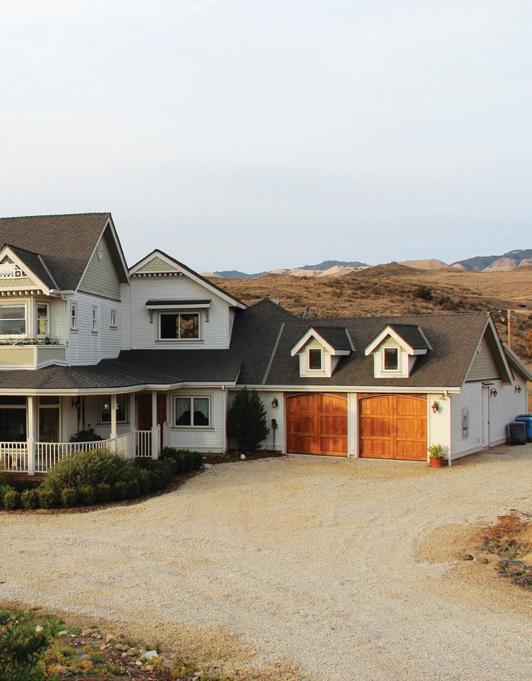
Hey, I went to school with her! I wondered what she’s been up to.”
- Paul
It’s nice to see that someone has figured out how to create a business that also helps people along the way.”
- Jennifer
>> Our story about Cal Poly student housing [“Bursting at the Seams,” Oct/Nov 2013] continues to resonate with readers as the issue remains very much in the news. Here is another letter we received recently…

Dear SLO LIFE, Great story and information. SLO is at the ‘tipping point’ when it comes to the owner/student renter ratio. If Jeffery Armstrong is serious about “Californiareally, the country - needs more Cal Poly graduates” then graduate them sooner! That would be the fastest way to fix the situation. Let him prove that he can do that first and then increase enrollment. I thank you again for bringing this issue, and the ensuing statistics, to the community’s attention.

>> The day after Cal Poly’s announcement that it will be pressing ahead with its controversial proposal to develop freshman housing on Grand Avenue, we received several calls suggesting that we follow up the “Bursting at the Seams” story by expanding on the idea we found, which is to allow for a rapid expansion of on-campus housing at virtually no cost to the university. Since that idea is so simple, we will go ahead and summarize it again right here:
There are companies that specialize in building on-campus student housing called REIT’s (Real Estate Investment Trusts) using private money from investors. With this arrangement, land-rich Cal Poly would not have to go out for a bond to finance their on-campus housing; instead they would strike a deal with a company such as American Campus Communities (ACC). Cal Poly would then lease the on-campus land to ACC for $1 per year, for example, and ACC would finance, build and manage the on-campus student residences. ACC would collect the rents from those properties for a period of 20 years, after which time they would hand it over free-and-clear to Cal Poly. We found that this formula worked well with several REIT’s who partnered with other public institutions around the country, including the University of Texas and Portland State University, among others.

>> We continue to receive our best story leads and suggestions from you. For example, the Diablo Canyon article (see page 62) was at the urging of one of our subscribers. If you have a story idea, or would like us to dig into an issue a little bit, please go to our website at slolifemagazine.com and click on the button that says “Share My Story.”
Please send your comments to info@slolifemagazine.com

Follow SLO LIFE on Facebook: Visit facebook.com/slolifemagazine Visit us online at slolifemagazine.com
Letters may be edited for content and clarity. To be considered for publication your letter must include your name, city, state, phone number or email address (for authentication purposes).

After removing its long-time city attorney in September—by providing a lump sump severance payment of $163,235—the Morro Bay City Council terminated the employment of its city manager, Andrea Lueker, a city employee since 1987 when she started as a lifeguard. Her last paycheck was made out for $153,322. The terminations, led by Mayor Jamie Irons, prompted a citizen recall effort to remove him, which eventually fell short as not enough signatures were collected. Citing employee confidentiality, no reasons were provided by the council for the firings.
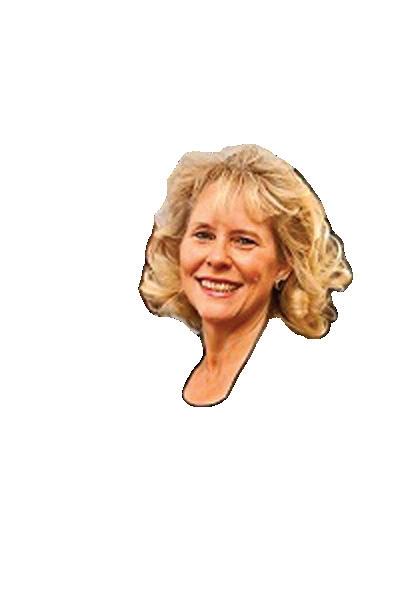

It’s official, 2013 will go down as the driest year on record in San Luis Obispo County. In the City of SLO, only 4.5 inches of rain fell all year, which shatters the previous record low of 7 inches recorded in 1898. Paso Robles received just 1.9 inches or approximately 15% of normal. Santa Maria had 3 inches, their driest year on record. The effects of the drought are magnified as they come on the heels of subpar rain years and leave municipal water supplies around the Central Coast in precarious positions. As local officials begin doing rain dances, the 2014 season is off to a slow start. At the time of this writing, no rain has fallen on the Central Coast since January 1st.

she wrote a petition that had not been

of the dust rule. In response, Peterson called a special meeting where representatives from Friends of Oceano Dunes, a non-profit pro-off road vehicle advocacy group whose members reside primarily out of San Luis Obispo County, tell the council essentially, “Reinstate Peterson or we will appeal the lodge and conference center project.” The 150-room hotel and 11,000 square-foot conference center has been slated for construction on about 13-acres

the intersection of West Grand Avenue and Highway 1.
The Milken Institute Index of Best Performing Cities reports that San Luis Obispo County is on the upswing when it ranks it 25th nationally. The report noted that it was “the largest gain of any large metro in the Top 25.” The Milken Institute ranks the entire county together, as opposed to individual cities, which puts its population at 274,000 thereby classifying it as a “large city.” The wine industry and growth in the technology sector are said to have driven the ranking. Incidentally, the rankings have varied dramatically over the past ten years: in 2003 SLO County ranked #6 and in 2009 it ranked #130 suggesting that the researchers at the Milken Institute may have been mixing wine with technology when putting together the report.
A report conducted by the US Department of Housing and Urban Development ranks SLO County as the 3rd worst in the nation for sheltering its homeless residents. The study estimates the homeless population to be 2,300 and suggests that 90% of those individuals are without shelter. Although local leaders continue to debate the causes and solutions, the fact remains that that the Central Coast, for whatever reason, continues to face major challenges with homelessness.

In a mind-boggling coup d’état, Gary Eberle was removed from his leadership role at the winery he founded over thirty years ago. With his half-brother ailing in an Alzheimer’s care facility, Eberle’s sister-in-law assumed voting rights of her incapacitated husband’s shares.
With control of the Eberle Winery board of directors, Jeanne Giacobine was able to push Eberle—who is often to referred to as “The Godfather” of the Paso Robles wine region—out of the general partner role. Although Giacobine offered no reason for the move, Eberle cited the board’s desire for more profits as the motivation and suggested that product quality would suffer with an expansion.

Fighting back tears on the steps of Santa Maria City Hall, Abel Maldonado announced that he was dropping out of the race to become California’s next governor. The republican, who had previously served in the state senate and as lieutenant governor, oversaw a campaign that never gained any significant momentum. Although he stated that “Now is my time to step away and stay home,” it is widely expected that Maldonado, a rising star within his party, will soon find another office to run for despite his recent 0-2 losing streak.
The race to represent District 4—Nipomo, Oceano, and parts of Arroyo Grande—on the SLO County Board of Supervisors is shaping up to be a hotly contested affair as another hat is tossed into the ring. AG-based real estate broker, Mike Byrd, announced that he will compete against Nipomo businesswoman Lynn Comptom and recently appointed Caren Ray [learn more about Ray on page 20] in the upcoming contest in June. If no candidate receives a majority of the vote at that time, there will be a run-off in Novemeber.


In what has become a familiar scene on the shores of the Central Coast, yet another drug trafficking panga boat washed up on Estero Bluffs beach near Cayucos. This vessel—the largest one to date, complete with powerful dual V-8 outboard engines and sophisticated communications equipment—was called a “super panga” by the sheriff’s department. It was the 11th panga found along the county shoreline since May 2012 and it contained 4,440 pounds of marijuana with an estimated street value of $6 million to $8 million. Authorities believe that the traffickers were interrupted while unloading their cargo onto the beach, which caused them to scatter and abandon the boat and its remaining bags labeled “Salvado,” or “bran.” No arrests were made at the time of the finding.

TTHERE IS AN old adage in photography that goes something like this: If you are not finding something in front of you, turn around and look behind you instead. That is exactly what Rénee Besta did last spring while photographing the alter in Mission San Miguel. As she pivoted the camera on its tripod, she was delighted to discover the view you see here. “I found all of the architectural lines, everything, the frescos, the beams, the pews, all lined up, all converging, and leading to the light which was coming in through a half-opened door,” shares Besta, who lives in Paso Robles.

The photographic technique Besta employed for this particular shot is called High Dynamic Range (HDR), which means that multiple shots are taken then layered atop one another to maximize the detail. To make this photo, Besta took a total of thirteen shots, which was made difficult by the tourists who would occasionally roam in and out. She then spent many hours of post-production work on her computer. The result is an exquisite rendition worthy of the 217-year-old North County jewel.
Besta, who identifies herself as “spiritual rather than religious,” often finds solace in Mission San Miguel where she can sit and reflect quietly with her thoughts. “Some people go to the beach or for a hike, but I find that this place has wonderful, wonderful energy. There have been so many people over the years coming here to pray or meditate, and all of that positive energy—and I hope this doesn’t sound too ‘out there’—gets absorbed by the building.” Besta pauses for a moment to collect her thoughts, “And in this particular photo, where everything is going toward the light; isn’t that the point? Aren’t we all, isn’t everything that is positive, looking to go to the light?” SLO LIFE

In October, Caren Ray was appointed by Governor Jerry Brown to complete the term of Supervisor Paul Teixeira, who had passed away unexpectedly. The appointment required that she resign her seat on the Arroyo Grande City Council, as well as leave her job at Santa Maria High School where she was popular with the students as both a history teacher and a water polo coach. Today, she is a full-time politician overseeing the County’s 4th District, which includes Arroyo Grande, Oceano, and Nipomo, as she prepares to run for election this June.
You have some deep roots in the county, correct? I’m a graduate of Arroyo Grande High School. I went to Cuesta College for athletics. I am the one and only female that has ever played men’s water polo at Cuesta. There were very few opportunities for women in collegiate athletics back then. The coach, Terry Bowen, who had an incredible influence in my life, had seen me play because I was local and asked if I wanted join the team. He said, “If you can do it like the boys, you can play with the boys.” I was already playing boy’s water polo at Arroyo Grande High School because there was no such thing as girl’s water polo. It was good preparation for politics, being able to hang with the boys. [laughter]

Do you really feel that politics is a men’s game? It still is in a lot of ways. And it’s a world I’m familiar with. I feel that I’m able to handle men and powerful people—both metaphorically and physically—because I am accustomed to finding my way in that world. So I enjoy that part of politics. I enjoy the social part of politics. I enjoy the challenge of politics, it’s a puzzle, it’s a game, it’s strategy, it’s preparation, it’s practice—it’s not physical practice as in sports, but it’s reading and being prepared; it’s the same approach.
And you still make time to be a mom. Tell us about your kids. I have two beautiful children. They are 13 and 11, Calob and Eron, eighth grade and sixth grade. Calob is in mock trial and has taken it upon himself to start a coding club at his school. My son Eron plays baseball and is dabbling in acting. They still think mom is cool, for now, so I need to bring them in as much as I can, and not let them go as much as they want to, and keep these bonds so strong while they still think I’m cool. [laughter] They’re good boys. I’m lucky.

You had taught history at Santa Maria High for 15 years. Why history? I went to UCLA and got my degree in history. I love to learn. I love academics and study. I was very fortunate; when I graduated my family gave me a trip to the Soviet Union. I had saved up some money and extended that trip by four weeks in Europe, doing the backpacking thing. Being there and seeing the world, and seeing the reactions to me, people could look at me and not only tell that I was American but also from California. Part of that was probably my blonde hair and my pink Nikes. I was surprised by the reactions of other people. Some
were very embracing and kind and some were very put off. I had never really experienced that before. I realized then that I wanted to teach. I wanted to teach world history.
What part of history most fascinates you? Mid-1800’s industrialization, and how industrialization really set up the circumstances that led to the issues of the 20th Century: two World Wars, communism in the Soviet Union, etc. etc. I’m not saying industrialization was bad, but the effects are so much more than the growth of cities and pollution. Not only did it affect our lives on a daily basis, but it also affected the way we relate to the rest of the world and to each other. That area of history is fascinating to me because it is so seminal. And, then jumping forward and looking into what’s happening in the Middle East and getting students to understand the complexities of that region. It’s difficult for them to understand why people can’t just choose to get along. Why, if you’ve got two groups of people who believe that they are right—and I can make an argument that they’re both right—how do you find peace in that circumstance? How do those conflicts affect our daily lives? How are we connected? Those are the questions I find intriguing.
It’s been said that “the past is prologue.” What will things be like in 500 years? I think they’re going to look back at industrialization and the 20th Century as something akin to the Dark Ages, I really do. And, I mean “dark” literally with the issues of pollution, but also with the mechanization of war. I think that we are coming into a period now where we are leaving a lot of that behind. And, because of our interconnectivity we’re coming into this era where you can’t just sit in your little fiefdom anymore, and you can’t behave in a way that is isolated from others. All of us matter to each other, and I think that is a very human way to exist. We are going through an extraordinary period of growth. The world is going through a massive amount of change like a renaissance. Some of it is extraordinarily good; the bad we will figure out. And we’re going to figure it out because I’m an optimist. We’ll figure it out. When you look at things on that continuum, that historical continuum, and project forward, I think it’s a very happy story. I think it’s a very positive direction.



























A few years ago DAN BERKELAND began baking bread and selling it from his San Luis Obispo home under the name Back Porch Bakery. Since that time, Berkeland’s baked goods have spawned a cult-like following prompting him to partner with a friend and launch Pan d’ Oro, a commercial bakery. He met his wife Caroline, who is from Sweden, at a hostel in Italy where the pair worked as cooks. They now have three daughters ages five, three, and one. Here is his story…
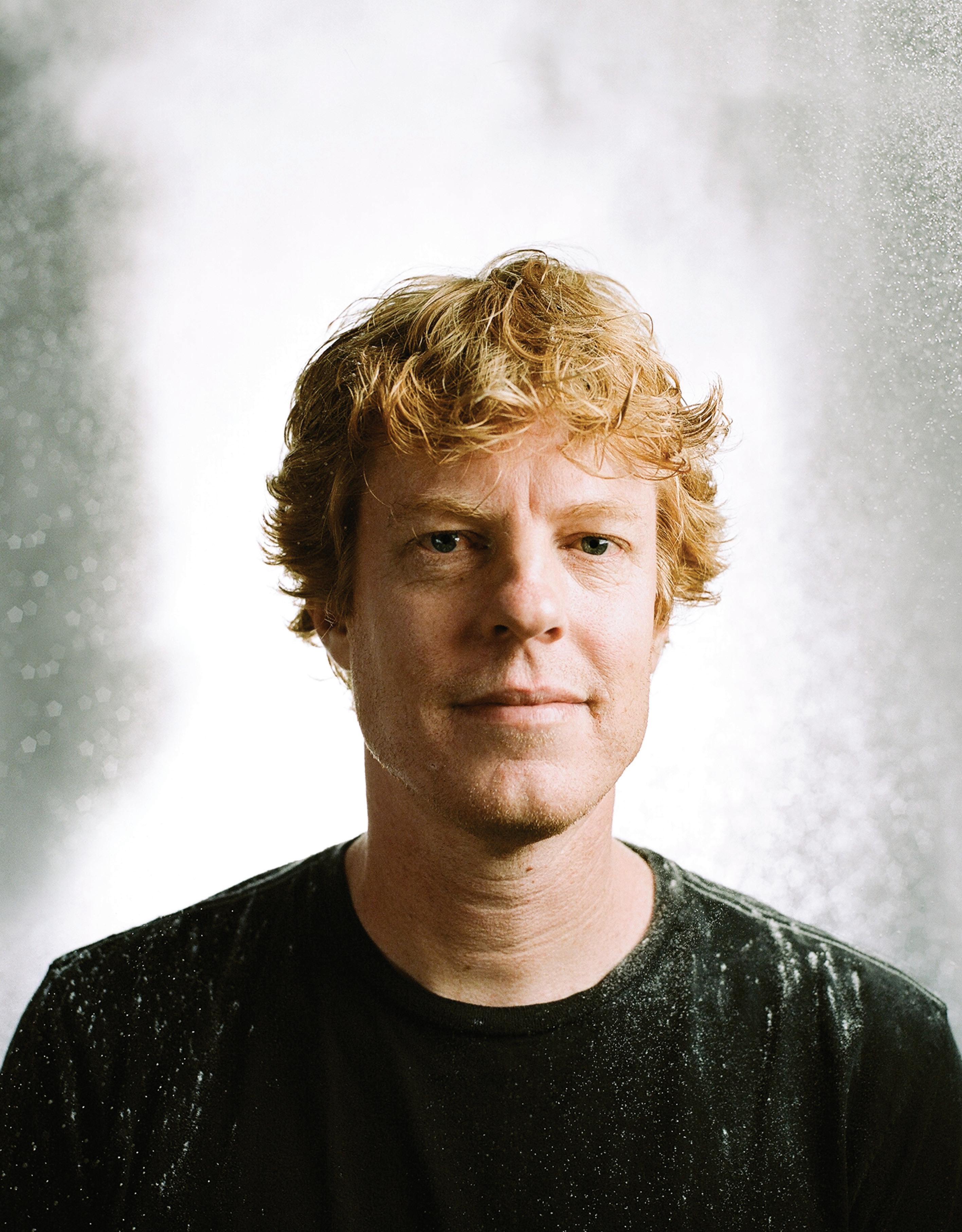
WWe like to take it from the top, Dan. Where are you from?

I’m from L.A., Inglewood actually. I graduated Cal Poly in architecture in ‘96 and I knew I wasn’t going to be an architect. I moved to Italy a week later. I went over there to travel around with my dad and ended up staying for about five years. To make money, I first worked on a farm taking care of olive trees, and I started painting about the same time. Then I started working in a kitchen at a guest house where they had 60 beds; it was like a hostel. All we did was take care of people. We made their beds, cleaned up the toilets, cooked their food. It was the most meaningless job in the world, but the most meaningful job in the world because everything had to get done. You couldn’t say, “My hours are up, I’m gone.” You had to do it. My wife always says—I met her there, we worked together, she’s from Sweden and we lived in Sweden for a little while, now we speak “Swenglish” with our daughters at home—but, she always says that since that time—I was in my twenties, I’m 41 now— everything I do in life is to try to duplicate that experience in Italy. Wherever I go, that’s where I try to get back to. We were cooks, my wife and I, not bakers, and we cooked Italian food for all of our guests.
What is it about Italy that you find so compelling?
I think people go to Italy—the little town I lived in, tiny little town—it’s not on the map, it’s not on the tourist map. It’s a charming little town with no great architecture, but it’s got its piazza and it’s really nice and people come there and they kind of fall in love with the town. They say, “I love this town. Why can’t we have something like this in the States?” The answer is simple: Because there, the guy who sold you the newspaper, that’s his business. He wakes up in the morning and he goes to his business. The lady that made you your coffee, that’s her business. She >>
woke up in the morning and she went to her business. And she does that all day. She goes home, sleeps a couple of hours, comes back and does that. Every little shop, every little experience you had in that town was created by someone who lives in that town and involves themselves in the workings of the town. That’s what a town is. I remember the Northern Europeans who would come over and buy a villa in the town—they would live in the town, but they didn’t participate in the town. They didn’t make the town, the town.
So, how do the various cities on the Central Coast make their town, the town? It’s the involvement in the town. If the person who’s giving you your food doesn’t care, it just reflects on the town experience. A town shouldn’t be a place that you live outside of and visit and then go back, and you visit and do your thing. There’s got to be a participatory thing in order for it to become that experience. You get that in San Luis Obispo. You definitely get it. But you’ve got to watch out, and don’t let that slip away. Again, back to the bread, that’s why I roll up in my stupid little blue van and I pull my bags of bread out and I walk around town and people yell, “It’s the bread guy!” That’s the Italian feeling right there! There’s the bread guy, there’s the flower lady, there’s the whoever. That’s a town! Bread guy isn’t some big corporate truck coming in and dumping it off at four in the morning. The bread guy is walking around with bags in the middle of the street. [long pause] Sorry, I don’t even remember what your question was.
That’s okay, let’s move on to the Back Porch Bakery. Tell us how it came to be. I was teaching some cooking classes at Sustenance, which closed its doors. I had gotten to know some people who were really
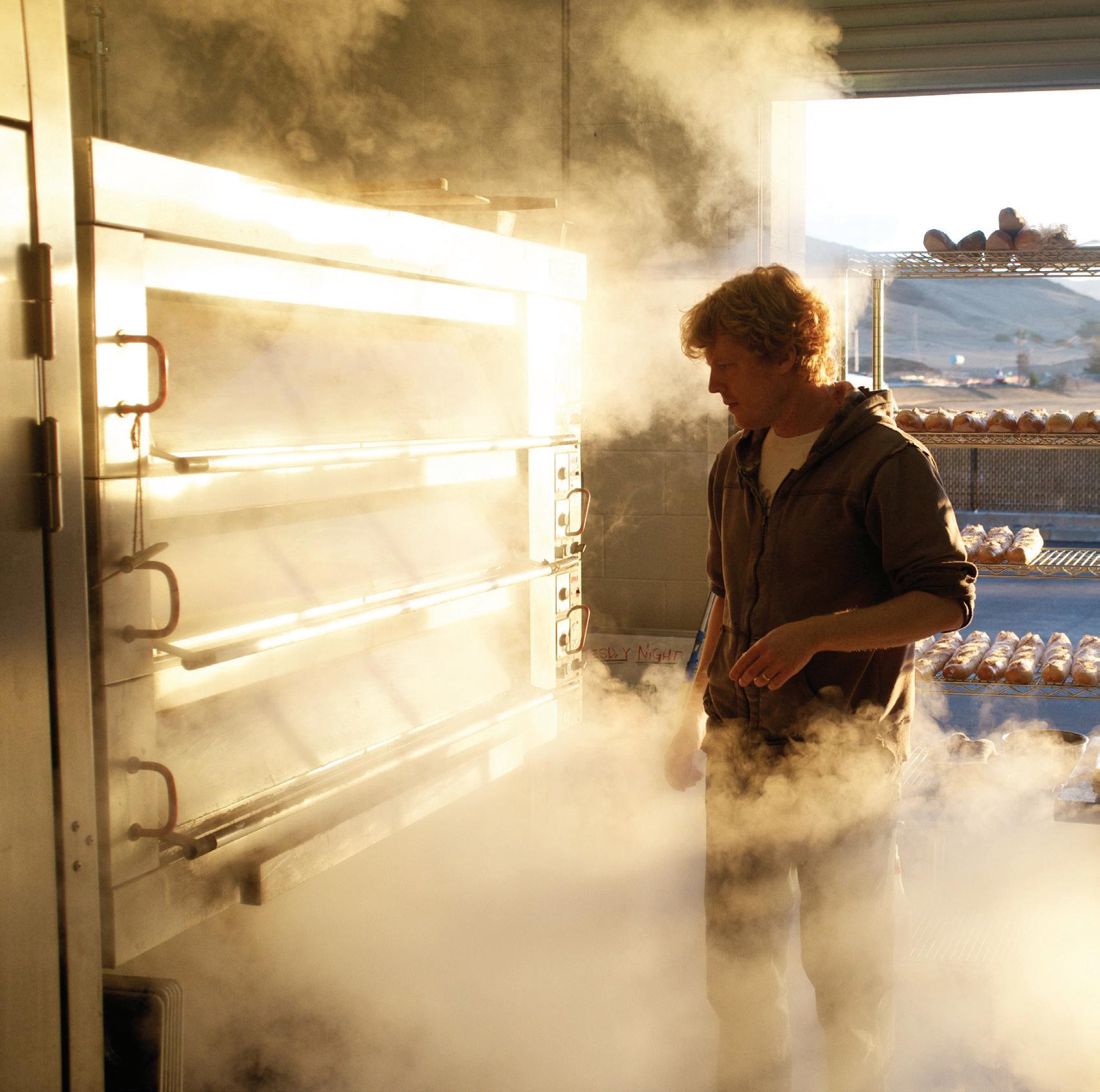
into the science of figuring out food and stuff, so I was always baking for my students. They kept asking me, “When are you doing this, when are you doing that?” And I said, “I’ll make a Facebook page and I’ll just send you a note when I’m making the next batch of something.” So I put up a page and I thought for like two seconds, called it Back Porch Bakery—just get it off the back porch, people come up to the back porch. My friends told me, “You should sell this!” And I said, “Yeah, you guys aren’t going to come and buy it.” And they said, “No, no, we’re going to come and buy it!” So I put the note on Facebook and a couple days later I said, “Okay I made the bread, come and buy it,” and nobody came and bought it. [laughter] “See, I told you guys,” I said. Everyone thinks they can cook something and all their friends will help start a restaurant and then nobody ever comes to eat there. So I said, “Alright I’ll try it again.”
So I did it a couple of days later and some stranger came to the door. Turns out that she lived in the neighborhood and she said, “Is this where I come for the bread?” And I told her, “Come on in!” I didn’t have any kind of
payment system or anything. Eventually I got a little donation can and people just donated whatever they felt it was worth, and it always just worked out. That’s what we’ve done for years. So, slowly more and more strangers are coming and they’d say, “Oh, I heard about you from so and so.” And it got to the point where a lot of people were coming at weird hours of the day so I got a flag. I said, “When the flag is up, you can come over. When it’s down, I’m closed.” Eventually blocks around, everyone was coming over. Then businesses started coming over and asking things like, “Can you make croissants for us to resell?” I said, “This is my house, there’s got to be rules against that.” And they’d say, “Whatever, just do it. Let’s get it started!” Eventually the Health Department got wind of it.
They sent me a note that said, “You’ve got to quit doing this.” So I took the letter over to their office and said, “What’s this all about?” [laughter] They were almost embarrassed because they didn’t expect me to show up over there; they thought I would just kind of stop doing it. They said, “Oh no, we had to do it because somebody complained. We
didn’t want to, we look at your webpage every day and it looks really good! But we can’t come over to buy your bread because we’re the Health Department.” I said, “Just come over. I’m not going to tell anybody.” I had all kinds of city employees coming in and I started getting nervous. So, I asked them, “Should I be nervous? You work down at the city.” And they’d say, “No, county, that’s who you’ve got to be nervous about.” [laughter] I used to get swamped by all the city tree guys. They would stop in for breakfast and then do their work cleaning up the streets. Even Jan Marx came by one time and she was a little skeptical. She asked me, “Can you do this? I mean there’s laws and stuff.” I told her, “I don’t know Jan, I’m just trying to feed my family.” She leaned in and said, “Don’t worry I won’t tell anybody.” I laughed and said, “Who would you tell? You’re the mayor! You’re the top of the food chain!” I mean, I understand why there’s laws and everything, but I don’t know, I like the term “disrupter.” I think it was Richard Branson who said it the first time. If there’s something in your town or community that you think can be done better, just do it. Think about the consequences later. I always had a feeling that someone would
wander into my bakery at some point with some little fee or fine something; but we’re pretty legit now.
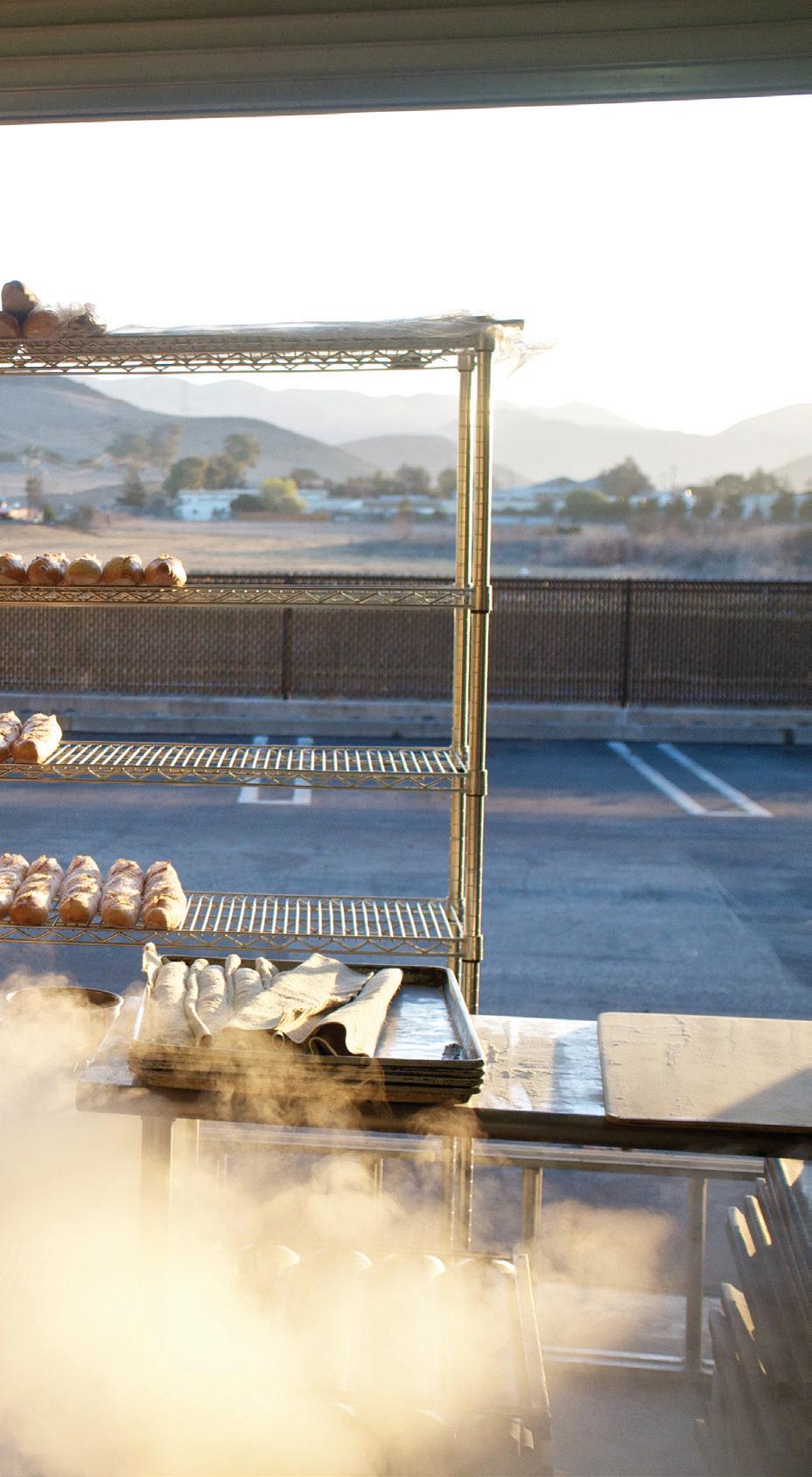
How were you able to operate out of your house for so long when you weren’t legit? I always tell people—I don’t know if it’s a good analogy—but I always felt a little bit like bin Laden must have felt in his neighborhood. It’s like getting away with this thing, but he knows everybody. He’s protected. It’s a terrible analogy. But you knew people—you knew the whole neighborhood. And I would walk around the neighborhood and say, “Hi,” to everybody. And I was just under the assumption that we all knew each other, but it wasn’t always true. Neighbors didn’t know neighbors. I knew this one and I knew that one, but they didn’t know each other. So, I was able to introduce people. Get people to meet their neighbor. That was probably the most rewarding part of the whole thing. Being this accidental little place where a neighborhood was getting connected. Because people would come in at the same time—three different groups of people sometimes and they’d all live relatively close by. And I have this weird way of finding a common thread. I say, “Oh, you went to that school, or you went there. Talk about that!”
And I miss it every day. It’s been a year since we stopped the house part of it. It was a great thing. There’s no way of continuing it. It was getting too big. So it was either get a little bigger and find a commercial space, or stop. Those were the only two options. So we went a little bigger.
What’s it like now that you have moved into a commercial space?
It’s hard work; we’re lifting things and shaping things and sweating a lot. We don’t have to go to the gym afterwards. We’ve

“If there’s something in your town or community that you think can be done better, just do it. Think about the consequences later.”
done our workout during our workday. You get people out in the fields doing that sort of hard work, for example. There’s plenty of physical labor out there. It’s funny that somewhere along the way we decided that you’re either going to use your body or you’re going to use your brain to do work. And if you’re using your body, you must have had a misstep along the way. If you’re doing physical labor you screwed up in life. There’s kind of that attitude a little bit. I have a friend who is a construction guy. He’s building stuff and breaking his back, but he’s got three degrees in three very different fields. He could have done anything, but he loves the physicality of his work. You think of Michelangelo and Leonardo da Vinci—those guys were brain and body—painting chapels or pounding out marble, making those sculptures. The brain and the body working together to create great things.
What do you think da Vinci would say about all of the processed foods in the world today?
I think that there’s so much that people just don’t understand about processed food. First of all, what do you mean when you say “processed food,” for example. Bread
is processed food, right? We took some ingredients and we processed them into a different thing. That’s processed food. We applied heat, we applied hydration we applied all these processes. That’s processed food. But that gets a pass, you know, people don’t consider bread a processed food. Unless you’re picking it off the tree and eating it, it’s probably a processed food in some way. When I visit my grandparents, we eat stuff out of cans. We eat Velveeta cheese. We drink—not to sound snooty—bad coffee. My grandparents grew up dirt poor. They raised four kids. When these things were innovated it was their savior, and my grandma didn’t have to slave anymore in the kitchen. She could take a little strip of cheese out of some plastic. I get that. It saved her. People are always afraid to cook for me because I’m very critical—not in the sense that I’m mad or anything—but people often ask me, “What could I do to make this better?” And I’ll tell them, “I will love anything you make for me, because you made it.” Same with my grandparents. I know it’s not going to be the best stuff, but it’s my grandparents and they made it, you know? So, the state of food?
I don’t know, I think I’m pragmatic about it. I would like to see people understand
seasonality, and I think more and more people do. I think that the hormones in meat and milk are doing damage. There’s a lot of things that I think, but I’m not a scientist.
At the end of the day, what does making bread mean to you?
What I constantly ask myself about the bakery is: “Does this matter? If it were gone tomorrow, would it matter?” And I think it absolutely would matter in a very small way, just like this town without your magazine. I think there would be a dip in the quality of this town, a slight dip in the quality of the town if it weren’t here. And I think if we took our bread out of circulation there would be a slight dip because we’re making really good bread—that’s our goal. And it’s hard work and there’s not a ton of money in it. I mean, that’s why you ask yourself, “Does it matter?” If we’re not going to make a lot of money, are we at least doing something that matters? And knowing that there are not a lot of people coming up behind us making good bread, because it’s very hard, so someone’s got to do it. And that’s what we do. We wake up each day to do it. And we feel good about it, because we know that we’ve made the town just a little bit better. SLO LIFE
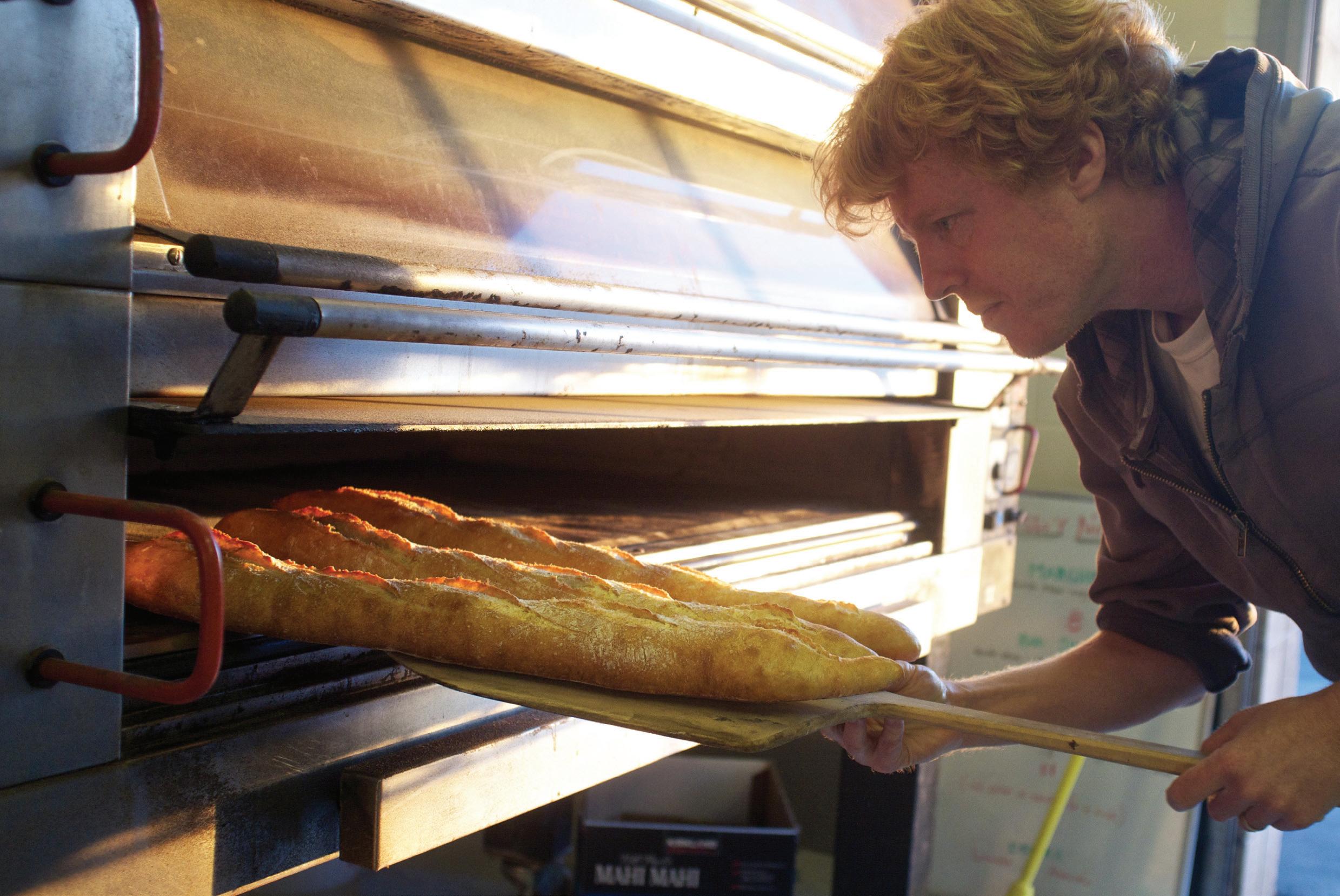
What I constantly ask myself about the bakery is: “Does this matter? If it were gone tomorrow, would it matter?”




“I decided that I was going to be an artist when I was four-years-old. When I went off to college, I wanted to learn as much as I could about everything because I felt that it would enhance my art. I felt that the more I knew about philosophy and astronomy and zoology, the better it would enhance my vision and what I wanted to communicate with my artwork.”
I learned to surf when I was twenty-one and it just took over everything. I wanted to live near the coast, I wanted to be in the ocean, I wanted to paint things that brought me a lot of joy. My grandfather was a diver here in the 30’s, 40’s, and 50’s and that has also inspired much of my work. They used to take me out on the tugboats when I was a little girl. I’ve just always loved the ocean.




Last year I thought I had a torn meniscus in my knee. They ran some tests and told me I actually had cancer, and they thought it would be best if they removed my leg right away. It was a rare form and I was very lucky that it hadn’t spread to the rest of my body. They were able to save my leg through very aggressive chemotherapy treatment.
”
I don’t know how people survive cancer without art, family and community. I can only hope that everyone with a cancer diagnosis will pick up a paintbrush, a pencil, some clay—no matter if they have never created a piece of art in their life, or are a professional artist. That experience, which I now consider a gift, explored the therapeutic aspects of creating and viewing art, and has fueled a different way for me to work, and to view my own work.
Art carried me through my treatments and all the emotional ups and downs that come with being very ill. I was only well enough to make it to my studio for a few hours between treatments, but I can’t explain how it changed my mood, my outlook, everything. I sketched constantly, living in my own world of beauty that I created. I also began to sculpt clay as a way to express myself and relieve the anger and frustration. It replaced the anger with joy.



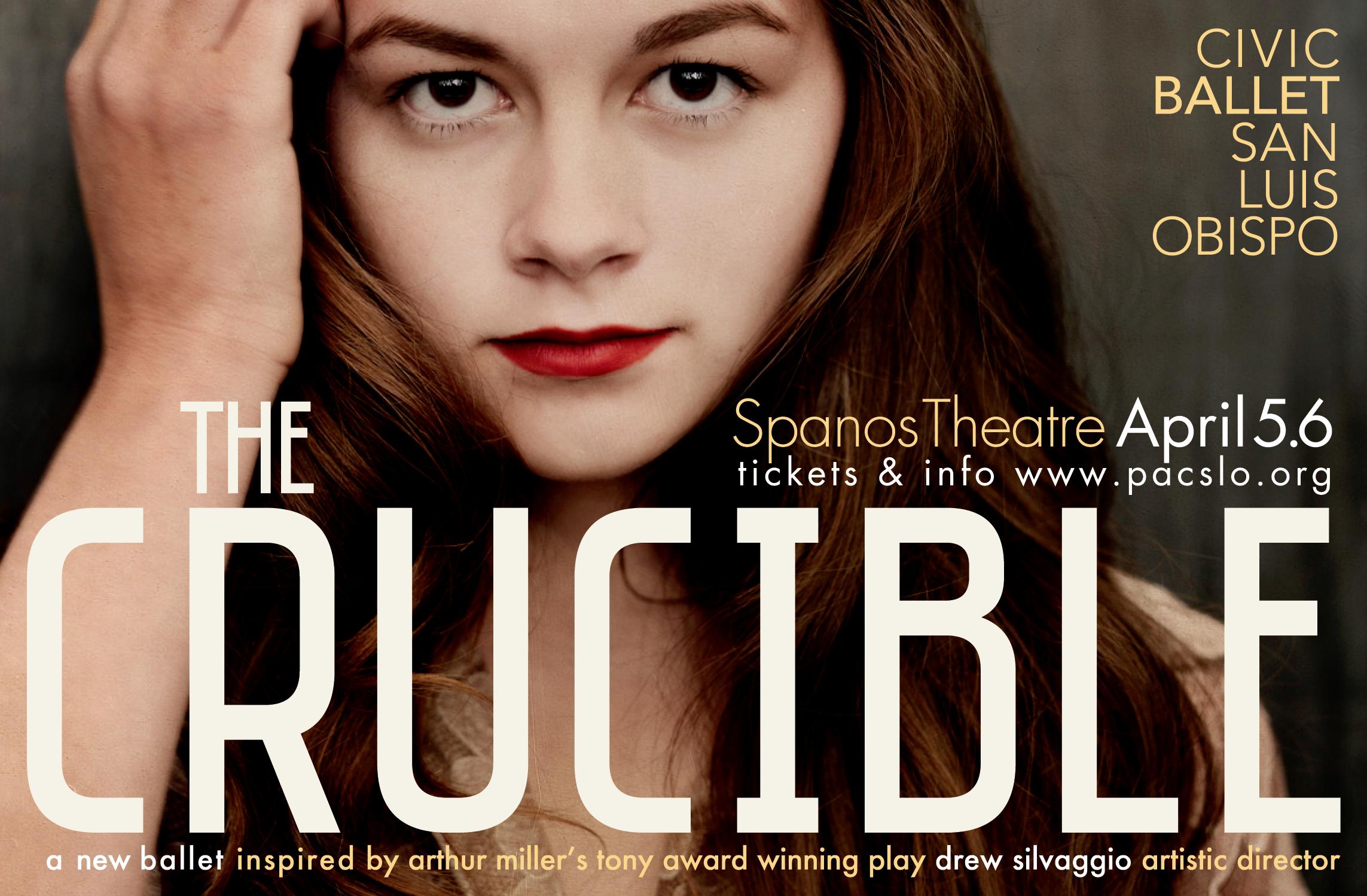
8:17am
9:32am
12:03pm
8:17am Pull up for breakfast at the Sea Shanty (296 South Ocean Street). Leave your car at the Paul Andrew Park next to the restaurant on North 3rd Street, you won’t need it today. The food at this little diner-by-the-sea is solid, and the service is great, and customers are happy. Go for something simple like bacon and eggs or try their homemade cinnamon rolls. Lounge around sipping coffee, reading the paper, and listen in on locals discussing the swell.
1:39pm
9:32am
Pop into Good Clean Fun (136 Ocean Front Avenue) to rent a board and wetsuit. Don’t worry if you have never gone surfing before, the people at this classic surf shop will point you in the right direction. Be sure to check out their upstairs selection of surfboards for sale. Even if you aren’t a surfer, some of these boards are just fun to look at. Whether you end up renting a boogie board or a surfboard, their advice will ensure you’ll have a blast in the water.
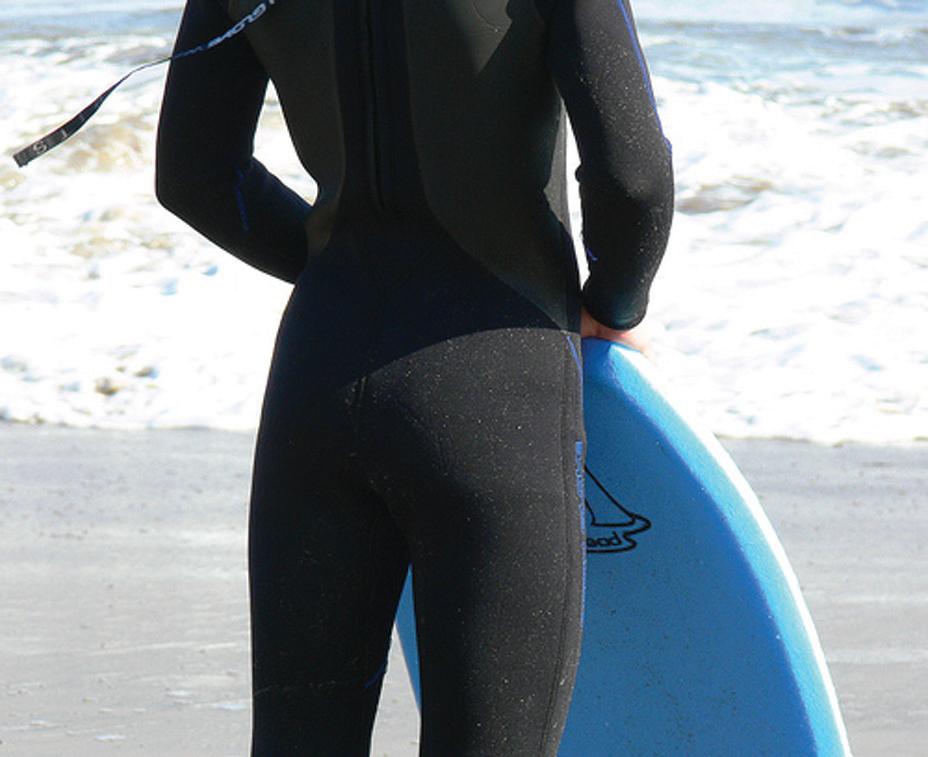
12:03pm With wet hair and sand in your ears, it’s time to eat! Since your appetite is raging after a session in the water, fuel up with some ridiculously delicious fish tacos at Ruddell’s Smokehouse (101 D Street). While you wait, because there is always a line, step in around the corner at Paul’s Liquors (101 North Ocean Avenue) for a killer craft soda. Our favorite is the ginger ale, which pairs nicely with the ahi tuna tacos.
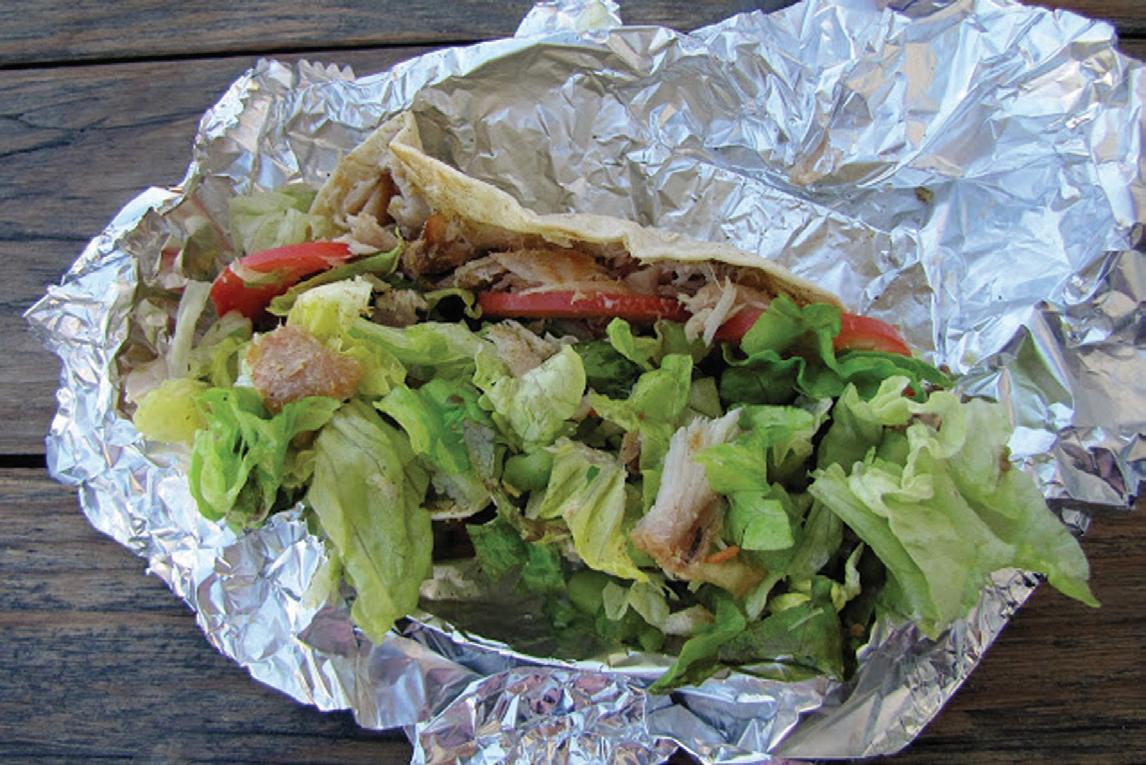
1:39pm With a belly full of fish tacos, you are feeling good, my friend. Time to take it up a notch. Round the corner past the liquor store and stop in at the to-go window at Skippers (113 North Ocean Avenue) and order yourself a soft serve ice cream. You’ve got two choices: chocolate or vanilla, and if you catch the right server and she’s having a good day, possibly a swirl. They don’t accept plastic, so bring a few bucks. >>








2:11pm Now that you’ve got your ice cream in-hand, it’s time to cross the street and check out the phenomenon known as the Brown Butter Cookie Company (98 North Ocean Avenue). It wasn’t long ago that these unusual looking little sandy brown morsels were just an afterthought served alongside sandwiches at a local hole in the wall deli. As customers started asking for just the cookie sans sandwich the owner began selling them separately. Once Oprah got her hands on one and deemed it “Faaaaabulous!” the rest, as they say, is history. Buy a dozen, and bring them home to share with

the rest of the gang and they’ll forgive you for being gone all day.
3:07pm It’s time to stroll on the beach, so head toward the Cayucos Pier. Half of it is currently closed for repairs, but the 953-foot beauty is still a sight to behold. And while you’re here, spend a few minutes checking out the skaters on the wooden half-pipe behind the Cayucos Veteran’s Hall at the beginning of the pier. There’s some serious local talent out there. Alright, get moving. Be sure to head south, toward Morro Bay, and take it all in. You’ve got twelve cookies on you, so nobody will miss just two or three of them, right?
5:14pm Feeling a little sleepy now, so it’s time to perk up. Grab a comfy seat at Top Dog Coffee (14 North Ocean Street) and brace yourself for a kick. They roast their own beans and it’s the real deal. Locals rave about the Mexican Mocha, so grab a mug and pull out your paperback and make yourself comfortable.
6:51pm Okay, it’s chow time. Stroll back down Ocean Avenue to Hoppe’s Garden Bistro (78 North Ocean Avenue). This place will blow your mind. Be forewarned that it is a little spendy, but worth every penny. Save up and splurge here, you won’t regret it. Pretty
much anything from the abalone farm up the street is amazing. Enjoy this Central Coast gem.


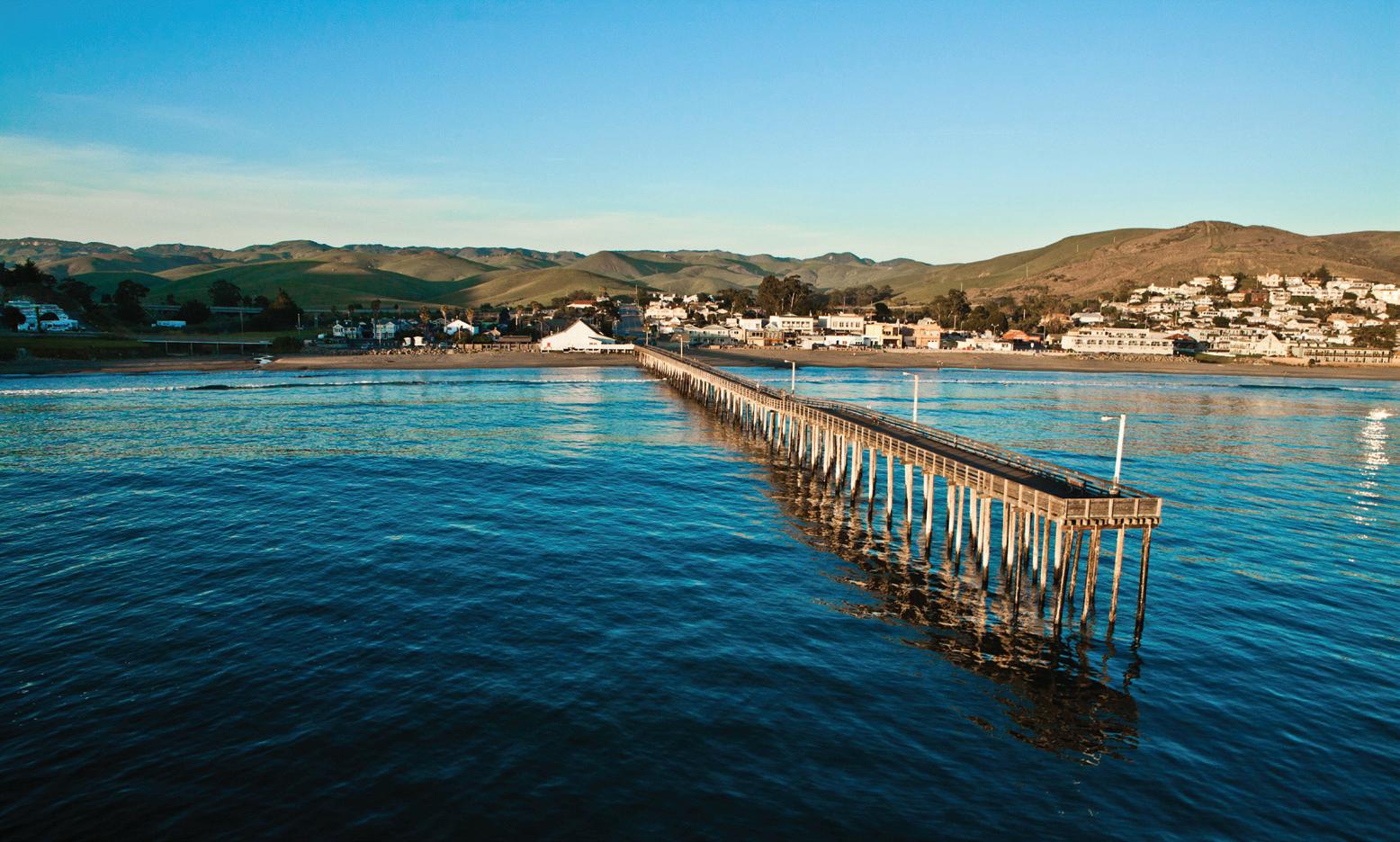
8:46pm It’s time to call it a day, but not before bellying up to the bar for swill of your favorite local brew at The Old Cayucos Tavern (130 North Ocean Avenue). The dark, wood paneling will take you back to the days of the Old West when the dusty streets of this shanty town were shared by cowboys, Salinan and Chumash Indians, pirates, fur traders, conmen, and prospectors. Toast to all of them, finish your beer, tip the lady and head out with a full belly and a happy heart.


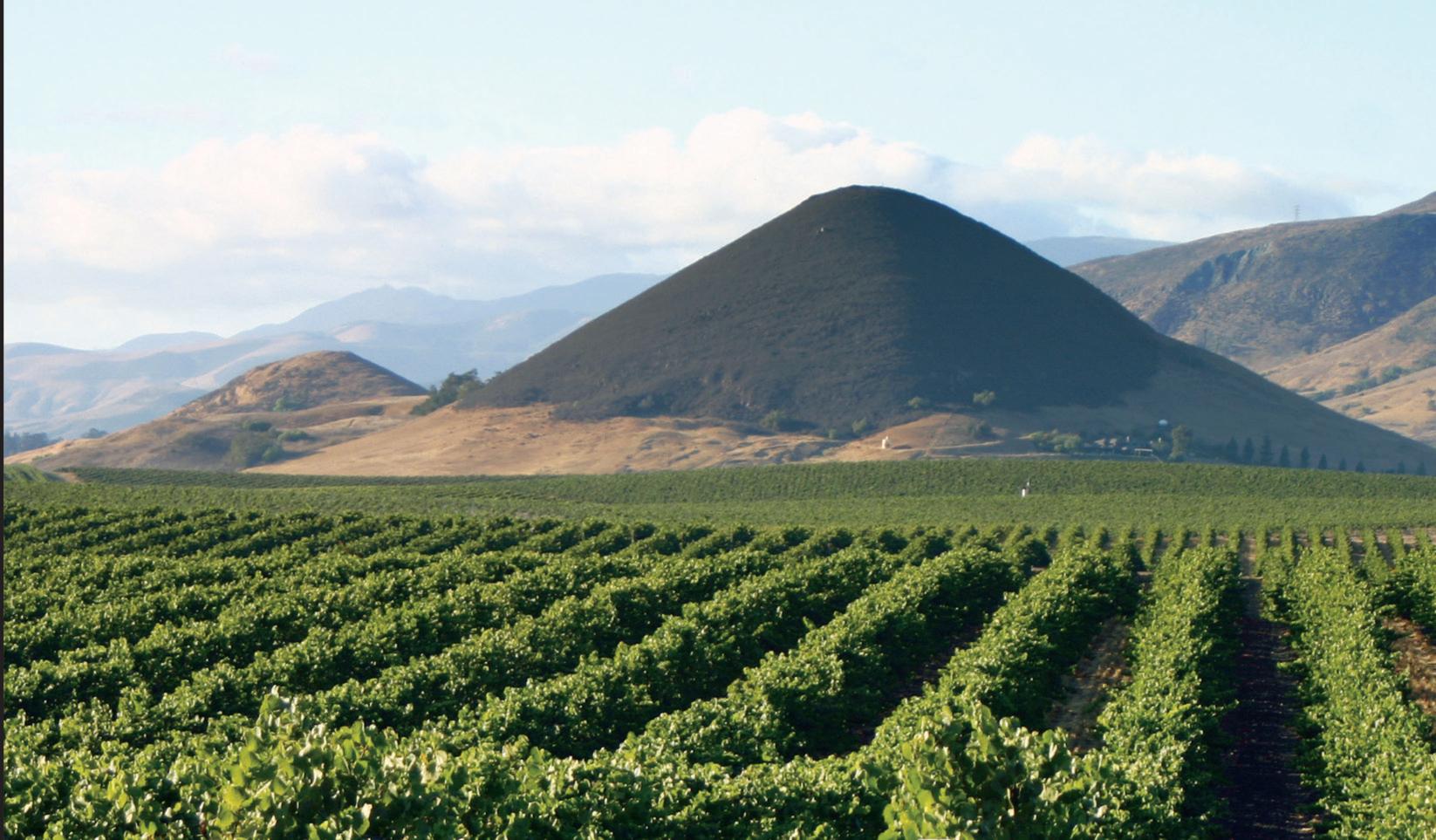



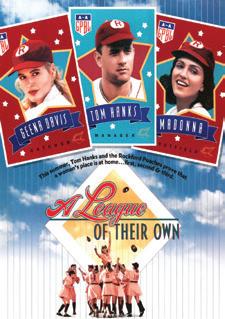
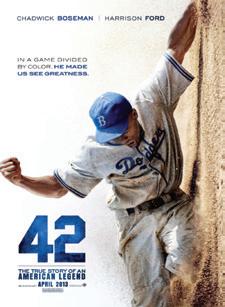

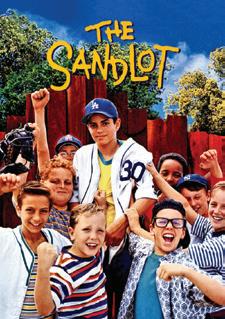
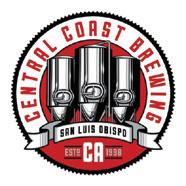






EEVERY WEEKDAY FOR the past 22 years, Dave Congalton has been found at KVEC Radio where he broadcasts The Dave Congalton Show from three to seven o’clock. But, it was not the lure of the airwaves that coaxed the native Midwesterner to leave his comfy college professorship in Tulsa, Oklahoma back in 1987.

At 34 years old, Congalton had finally come to terms with the fact that his work was leaving him unfulfilled, uninspired. When he was honest with himself, what he really wanted most was to write a Hollywood screenplay. But, in order to make a go of it he needed an income, a day job.
>>Congalton penned the screen play he called Scribble, which was later renamed Authors Anonymous

The closest gig he could find to Tinseltown was a short-term teaching position at some obscure college he had never heard of: Cal Poly. It was a particularly fertile time for Congalton who cranked out screenplay after screenplay, seven in all. The studio rejection letters came back just as quickly.
Although his passion for writing never waned, after twelve years without a bite, Congalton decided to hang it up. He wrote for a living anyway, as a columnist for the TelegramTribune, and he also ran the Cuesta College Writer’s Conference. Plus he had written a couple of books about animals. And, in 1992 when he transitioned from professor to radio show host, he always had “one foot in radio, one in writing.”
In 2005, sensing a shift in the industry, Congalton decided to give it one last try. The creativity flowed and by September of that year he had a first draft of the screen play Scribble written. He learned that the best way to have the film produced was to secure financing for the
project in advance. So together with his wife, Charlotte Alexander, now the director of the SLO International Film Festival, the pair began “scouring the globe in search of money.” The couple talked to investors everywhere and, although there was interest, no one was ready to write a check. Not ready to give up, Congalton decided to line up a key actor. With Kaley Cuoco of the hit show The Big Bang Theory on board, one of the investors finally game through. It was 2012, five years later. Once the money was in place, things started to happen very quickly. By August, Congalton was on the set of Scribble, which had been renamed Authors Anonymous. The film, classified as a comedy, follows a group of misfit writers who drive one another crazy and “try to avoid killing each other in the process.” Aside from Cuoco, Dennis Farina and Chris Klein, many other Hollywood well-knowns are found gracing the credits of the film, which is due for an Ultra Videoon-Demand (Ultra VOD) release on March 18th followed by a general movie theatre release to twelve select cities on April 16th.
For someone who is accustomed to leading a talk show for four hours a day, Congalton is uncharacteristically at a loss for words to describe his experience on the set as he watched the actors perform the scenes he had imagined and utter the words that he had written.
“It was an amazing experience, hard to put into words,” was all he could muster behind a veil of building emotion. “For me, it validates my decision back in ’87 to give it a shot. Everyone thought I was crazy. I tell people now ‘Don’t ever give up on your dreams. It may not happen right away, but it will if you stay with it.’ And, I’m the perfect example of that.”
coziest, AND spacious! The service is excellent. The breakfast is just superb. There was absolutely no shortage of quality here. The staff is so warm and friendly. You really get the bang for your buck.












Benjamin Peterson is an eighteen-year-old San Luis Obispo High School senior and the oldest of three kids. While serious-minded—his friends joke that he’s “an old man”—his sense of humor shines with his impersonation of Louis Armstrong. We would not be surprised to see him running the country sometime in the future.
What sort of extra-curricular activities are you involved in? I am a member of the National FFA Organization and currently serve as our Regional Secretary. I compete in Prepared Public Speaking and Parliamentary Procedure debate through FFA, as well. I previously served as our Chapter and Sectional FFA President. In addition, I intern at our State Assemblyman Achadjian’s office and have previously worked with the SLO Chamber of Commerce Governmental Affairs. Harvard Model Congress and Autism Youth Ambassadors are two clubs at SLO High that I initiated.
What is noteworthy about you? This past summer Senator Feinstein appointed me to the Senate Page program in Washington D.C. after I completed an extensive application process. I moved in with thirty other pages from around the nation and began working on the Senate floor. Being privy to many private conversations, commuting to the Senate everyday (about a ten minute walk), listening to Senate speeches, and getting to meet and know Senator Feinstein was an experience that fed my passion for the political process.
What is going on with you now? School and homework! Taking five AP classes is not easy. I am also preparing a speech for a competition through FFA right now. I have to write an eight-minute speech about any problem in agriculture then propose a solution. The speech has to be memorized, then I will answer questions on my topic. This year I’m focusing on corn ethanol and arguing that it should be done away with due to the negative impacts it has on consumers in Third World nations and livestock producers here in the United States.
What do you dislike the most? Our education system of academic achievement in the form of a letter grade combined with the pressure placed on students to “get in” (solely for college). I would enjoy a classical education system like that of our founding fathers, centered on the study of classic literature, Socratic discussion, and logical reasoning within our world in regard to every subject. That would truly be educational and inspire the desire for knowledge, not the achievement of a report card.
Who or what has influenced you the most? My parents and grandparents. I’ve been blessed to have my whole extended family live here in SLO. I owe everything to them and am thankful for the values they instilled in me.
If you could go back in history and meet anyone, who would it be and why? Winston Churchill. I firmly believe that our way of life in a democratic society was saved by his courage and determination when, in 1940, he became Prime Minister of Great Britain and led the fight against Nazi Germany alone.
If you won $1 million, what would you do with it? I’d first talk with a financial consultant and figure out the tax situation, which would probably leave me with about half. Then with the $500,000 remaining, I’d save some, spend some, and share some. College expenses would take priority, and I would also love to help my parents with it.
Know a student on the rise?
Introduce us at slolifemagazine.com/share




A fascinating social experiment is taking place on a five-acre plot of land at the end of Halcyon Road in Oceano. With the ocean sparking in the distance, just beyond the dunes, 68 people are living together in a 27-unit complex that was built in 1999. Those people, ranging in ages from one-year-old to mid-eighties, have come together to live in a development known as “cohousing.”
People call it a village, and we know everyone. My daughter knew everyone’s name by the time she was two, including all the cats and dogs, which is cool, you know? ”



1. resident work day 2. neighbors visiting 3. feeding the community chickens 4. walkways everywhere, not a car in sight 5. village by design

CCohousing, which derives from the term cooperative housing, originated in 1960’s Denmark. The roots of the concept are credited to Bodil Graae who wrote a newspaper column with the title “Children Should Have One Hundred Parents.” The piece resonated during that time and soon cohousing began spreading throughout Europe. The concept is simple, a group of families and individuals come together to create a type of intentional community, each one owning a private home which is supplemented by shared facilities and shared responsibilities. Although Graae is recognized as the catalyst for the modern day cohousing movement, its philosophic underpinnings can be found much deeper in history.

The word “utopia” traces its roots back to the Renaissance. The English lawyer and philosopher Sir Thomas More first brought the concept to mainstream consciousness with his 1516 book called Utopia. The novel describes a fictional island society, which follows many of the same principles espoused by the Cohousing Association of the United States. The organization uses the tagline “Building a better society, one neighborhood at a time” and is governed by its “Six Defining Characteristics of Cohousing,” which are as follows:

1) Participatory process—everyone has a say; 2) Neighborhood design—ample open space to encourage community;
3) Common facilities—equally shared and maintained by all;
4) Resident management—everyone is expected to contribute, whether by making meals or maintaining the landscape;
5) Non-hierarchical structure and decision-making—there is no leader and everything must be done with consensus; and
6) No shared community economy—it is not to become a business or source of income. Within those six areas each cohousing community—or “coho” as it is commonly referred to by its members—has some flexibility in how they are administered. >>

Sir

1. remnants of the commercial avocado orchard can be found throughout the property 2. resident housing utilizes passive solar heating 3. the children’s play structure acts as a centralized meeting place


The first person we encountered at Tierra Nueva was Maren Brajkovich, a thirty-something mother of two, who moved in a year before her first child was born in order to “have a community around her” during this period of her life. She was first exposed to the concept when she was living in Fresno. During that time her husband, Michael, was teaching at a community college where he took on a class that explored utopian societies. A quick search online for modern-day utopias continued to produce hyperlinks to various cohousing communities. He was then surprised to learn that there was a nascent group in Fresno in the beginning stages of building a cohousing community there with a local presentation happening that week. Michael convinced his wife to come along to keep him company while he did his research. As she sat in the back row reading a book she had brought with her to pass the time, Maren, a wedding photographer, found herself tuning in to what they were saying. By the time the meeting was over she was asking questions. “I thought to myself, ‘Wow, this sounds like a great idea! Why aren’t people doing this? I want to see one.’” So that weekend, the couple hopped in the car for a trip to Oceano to take a look at Tierra Nueva—that same day they made the decision to buy. It was an uncharacteristically spontaneous move for the pair, who share that big-ticket purchases for them are usually agonizingly slow and painstakingly analyzed before any commitments are made.
But, it is that sort of gut-level desire to live in a cohousing community that brings together certain types of people, and everyone who commented for this story indicated that “a strong community” was at the top of their list. And, by all appearances, a strong community is thriving in the former avocado orchard adjacent to Rutiz Farms where ten or so kids of varying ages engage harmoniously on the playground equipment in the park at the center of the complex. A smattering of neighbors ranging in age from 35 to 75 stand nearby visiting with one another while keeping a watchful eye on the children. If one did not know better, it would appear to be some type of family reunion from the easy way that everyone interacts.
>>


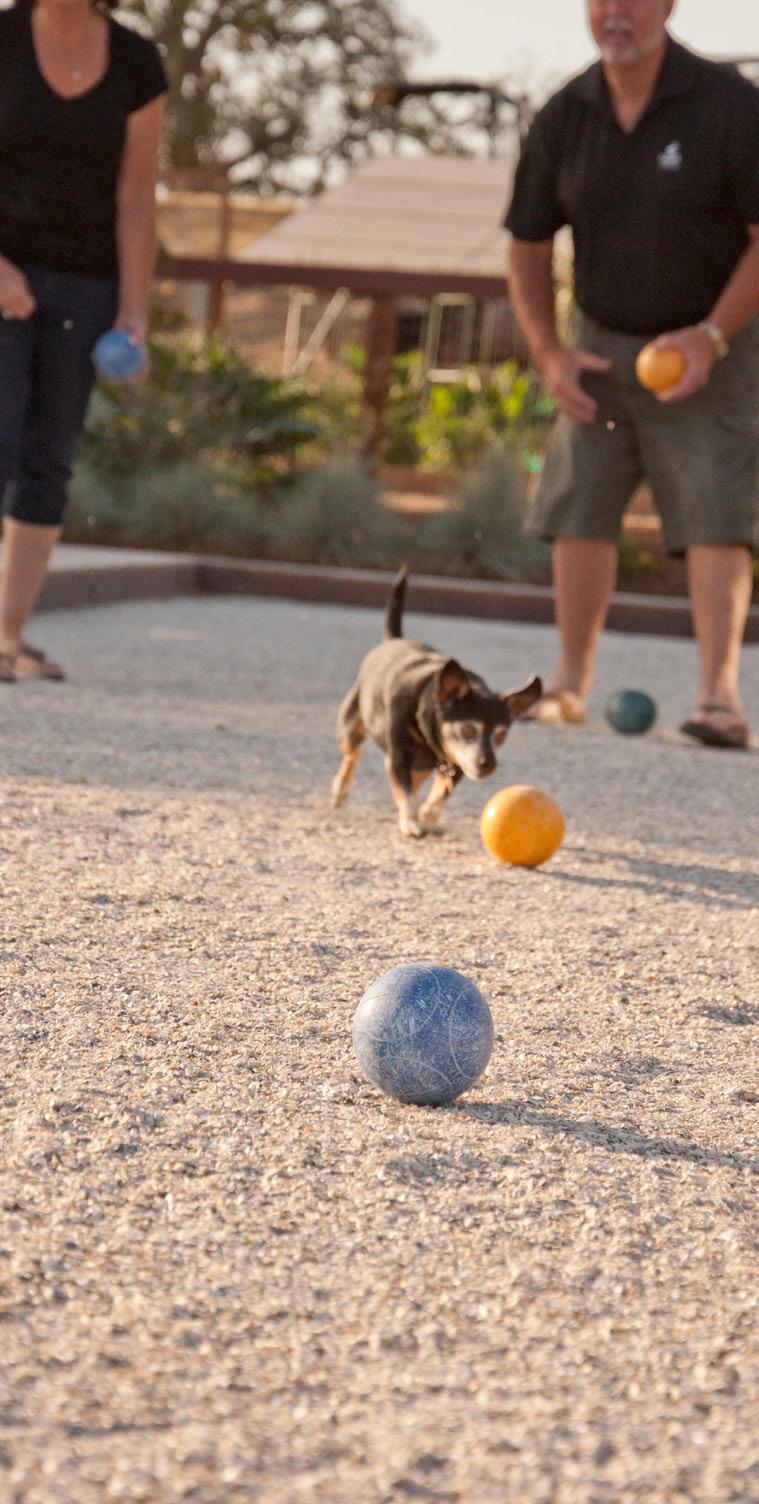
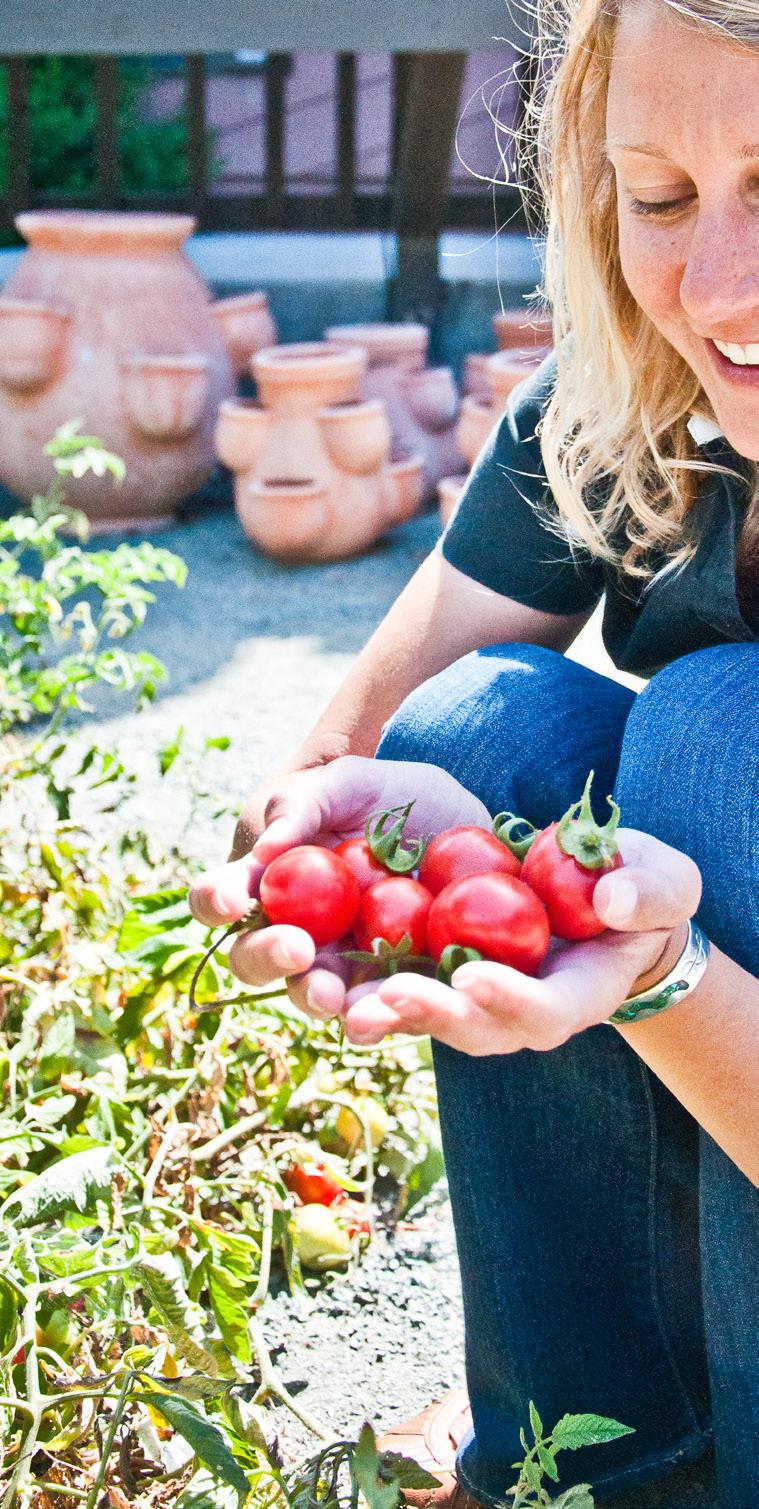
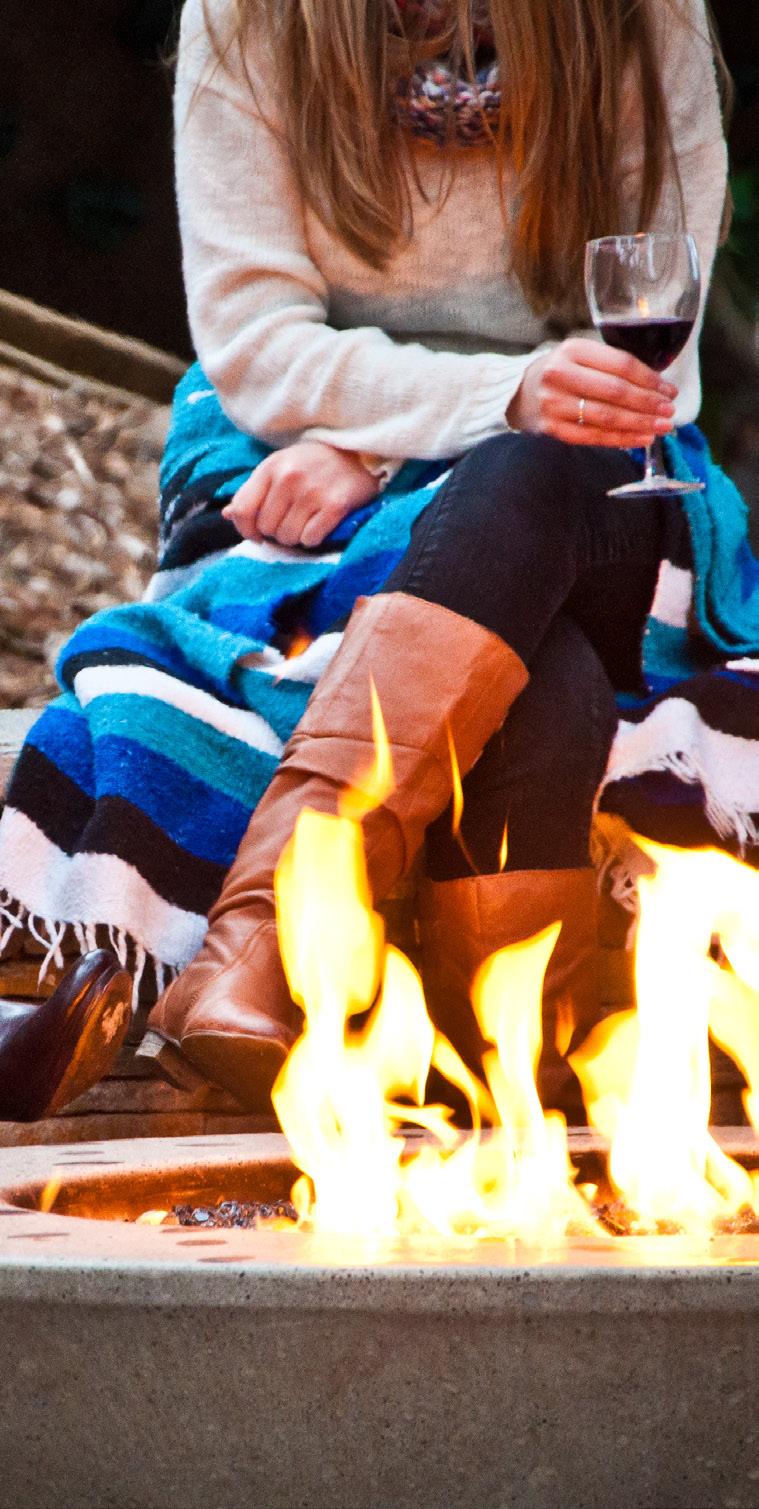


One of the benefits and drawbacks of cohousing—depending on whom you ask—is that there is no screening process. Anyone who wants to live in the complex and has the money to buy a unit is welcome to do so. In reality, cohousing communities are really just supercharged homeowner associations (HOA), which are bound by the same Fair Housing Act that all HOA’s must follow. This has created a couple of challenges at Tierra Nueva: first, there is a lack of ethnic diversity that members practically trip over themselves to apologize for; and, second, it has allowed a few people to enter who “do not participate.” One of the more pragmatic residents at Tierra Nueva reasons that the Fair Housing Act helps “keep us from going off the deep end by forcing us to deal with others who aren’t always of the same mindset.”

Despite the frequent socializing—Tierra Nueva residents sit down to dinner twice a week in their community room—the experience can lead to an island fever-like feeling. Caity McCardell, who produces radio podcasts, provides a very honest look at coho living. In the community room where a long-dead Christmas tree lingers in the corner stripped of its decorations, but waiting for someone to dispose of it, McCardell intimates that she and her husband and their young daughters had once considered moving to San Luis Obispo. “Cohousing is an isolating experience, and not having to drive anywhere is better for the planet and is appealing to me.” Neighbors who do drive “off-campus,” as McCardell describes it, usually ask her if there is anything they can pick up on her grocery list while they are out. Aside from missing many of the serendipitous encounters that happen all day long as neighbors and friends catch up with each other at grocery stores and restaurants and boutiques, McCardell wishes that there were at least a coffee shop nearby. “If only Peet’s or Starbucks would come to Oceano, it would make such a big difference.”
It is interesting that McCardell uses the expression going “off-campus” because Tierra Nueva, which translates from Spanish to “new earth,” does very much have a university
housing vibe to it. All of the buildings, in that they look very similar to one another, have a vaguely institutional feel to them. The combination of duplexes and single-family homes were all built in the late 90’s, and they all sport the same terra cotta colored stucco siding along with white rimmed vinyl dual-pane windows. Their interiors are small with very limited closet and storage space and no garages. This design is employed for a couple of important reasons, as one resident pointed out, “We want to discourage personal stuff and encourage everyone to get outside.” Despite the neat and tidy homes, the focus for most of the residents falls to the common areas. The avocado trees that dot the property—remnants from its days as a commercial orchard—serve as a nice compliment to the abundance of bushes and flowers that line just about every square inch of available soil. The noticeable lack of streets—the hallmark of suburban America as kids stop whatever game they are playing to yell out “car!”—is refreshingly absent. Parking is limited and automobile access is available only on portions of the perimeter.
Despite the high-minded ideals of utopian societies, visitors to Tierra Nueva will be struck by the ordinariness of it all. Brajkovich shares that people unfamiliar with cohousing see it “as some sort of cult,” but asserts that they “are not weird, running around naked and smoking weed together.” Rather, she explains, it is a lot of hard work and everyone is not always in agreement—unanimous consent is required to create or change any rules—and sometimes people do not pull their own weight. Yet, despite the drawbacks, she claims that she would not want to live any other way. “People call it a village, and we know everyone. My daughter knew everyone’s name by the time she was two, including all the cats and dogs, which is cool, you know?”






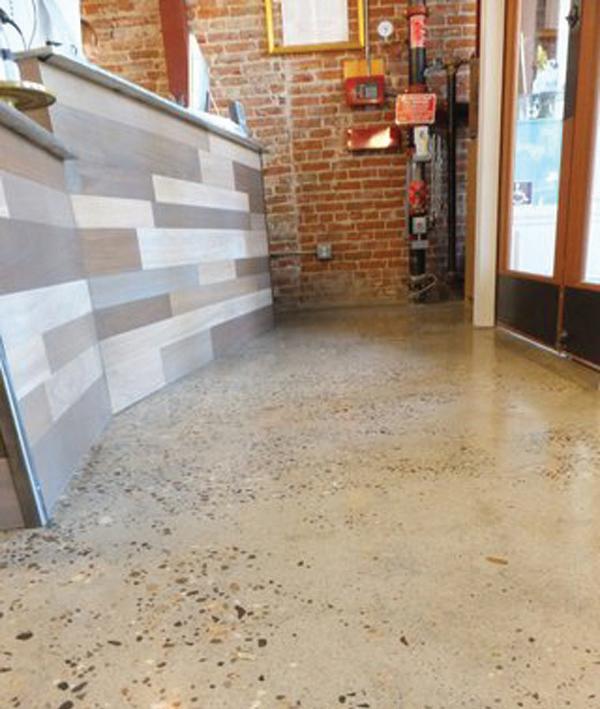
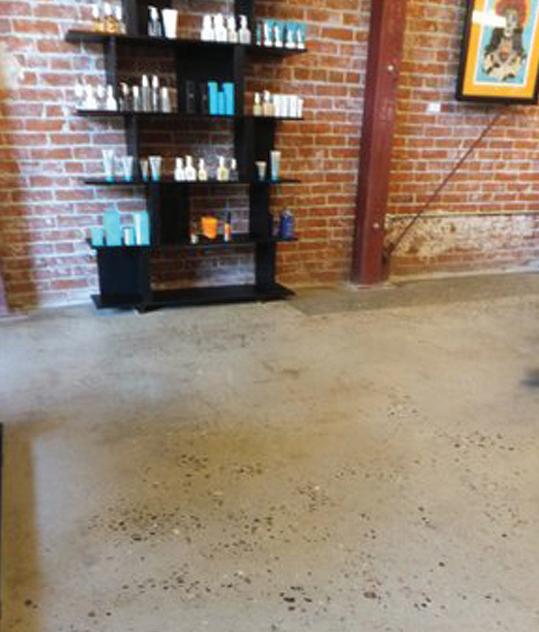

Total Homes Sold Average Asking Price Average Selling Price Sales Price as a % of Asking Price Average # of Days on the Market
Total Homes Sold Average Asking Price Average Selling Price Sales Price as a % of Asking Price Average # of Days on the Market
Total Homes Sold Average Asking Price Average Selling Price Sales Price as a % of Asking Price Average # of Days on the Market
2012 55 562,209 547,171 97.68 62
2013 57 547,794 537,208 98.1 57
+/9.09% -2.56% -1.82% 0.42% -8.06%
2012 34 586,335 575,850 98.16 58
2013 25 678,820 678,036 99.89 20
+/-26.47% 15.77% 17.75% 1.73% -65.52%
2012 22 499,959 479,625 96.17 47
Total Homes Sold Average Asking Price Average Selling Price Sales Price as a % of Asking Price Average # of Days on the Market
2012 19 797,732 766,921 96.29 19
2013 32 558,181 548,062 98.43 33
+/45.45% 11.65% 14.27% 2.26% -29.79%
2013 17 888,494 871,847 98.15 66
+/-10.53% 11.38% 13.68% 1.86% 247.37%
Total Homes Sold Average Asking Price Average Selling Price Sales Price as a % of Asking Price Average # of Days on the Market
2012 47 609,726 593,223 97.85 59
Total Homes Sold Average Asking Price Average Selling Price Sales Price as a % of Asking Price Average # of Days on the Market
2012 48 534,854 526,923 98.77 32
2013 47 644,016 628,385 97.64 38
+/0.00% 5.62% 5.93% -0.21% -35.59%
2013 50 657,016 644,642 98.11 37
+/4.17% 22.84% 22.34% -0.66% 15.63%
2012 54 582,094 571,416 98.47 68
2013 44 600,643 596,434 99.26 31 johnson ave *Comparing 1/1/12 - 12/31/12 to 1/1/13 - 12/31/13
+/-18.52% 3.19% 4.38% 0.79% -54.41%
SOURCE: San Luis Obispo Association of REALTORS®



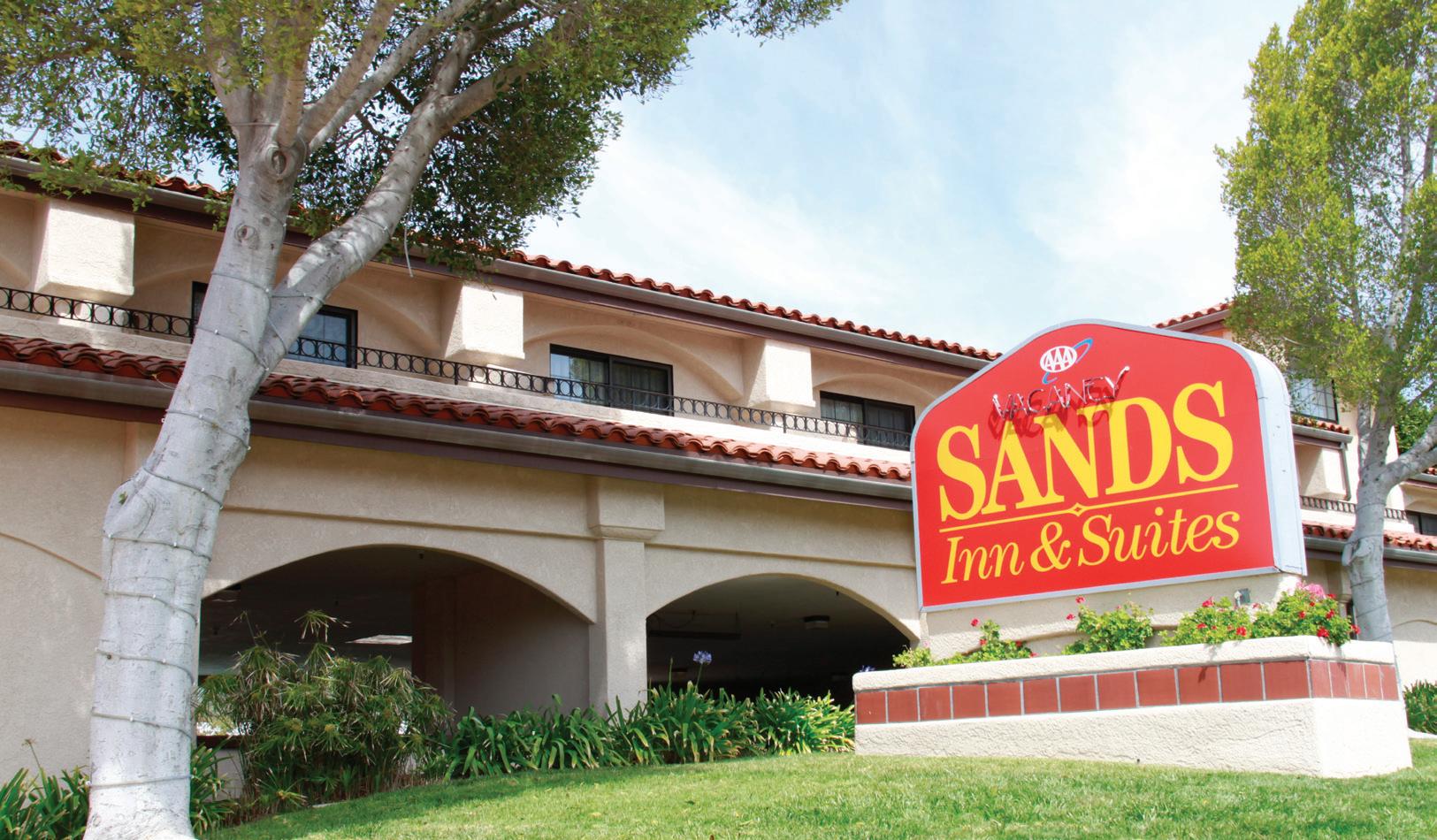

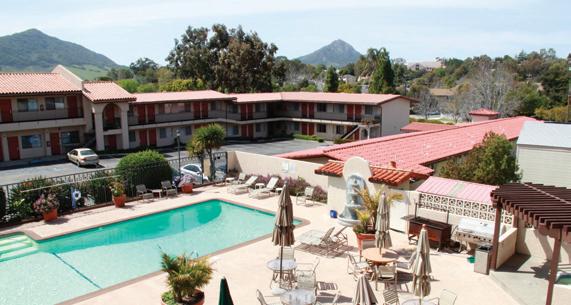


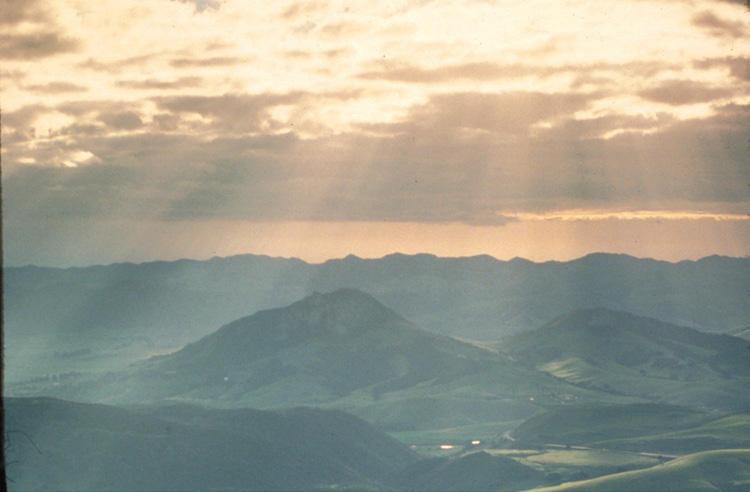

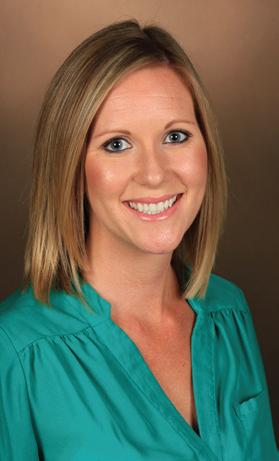



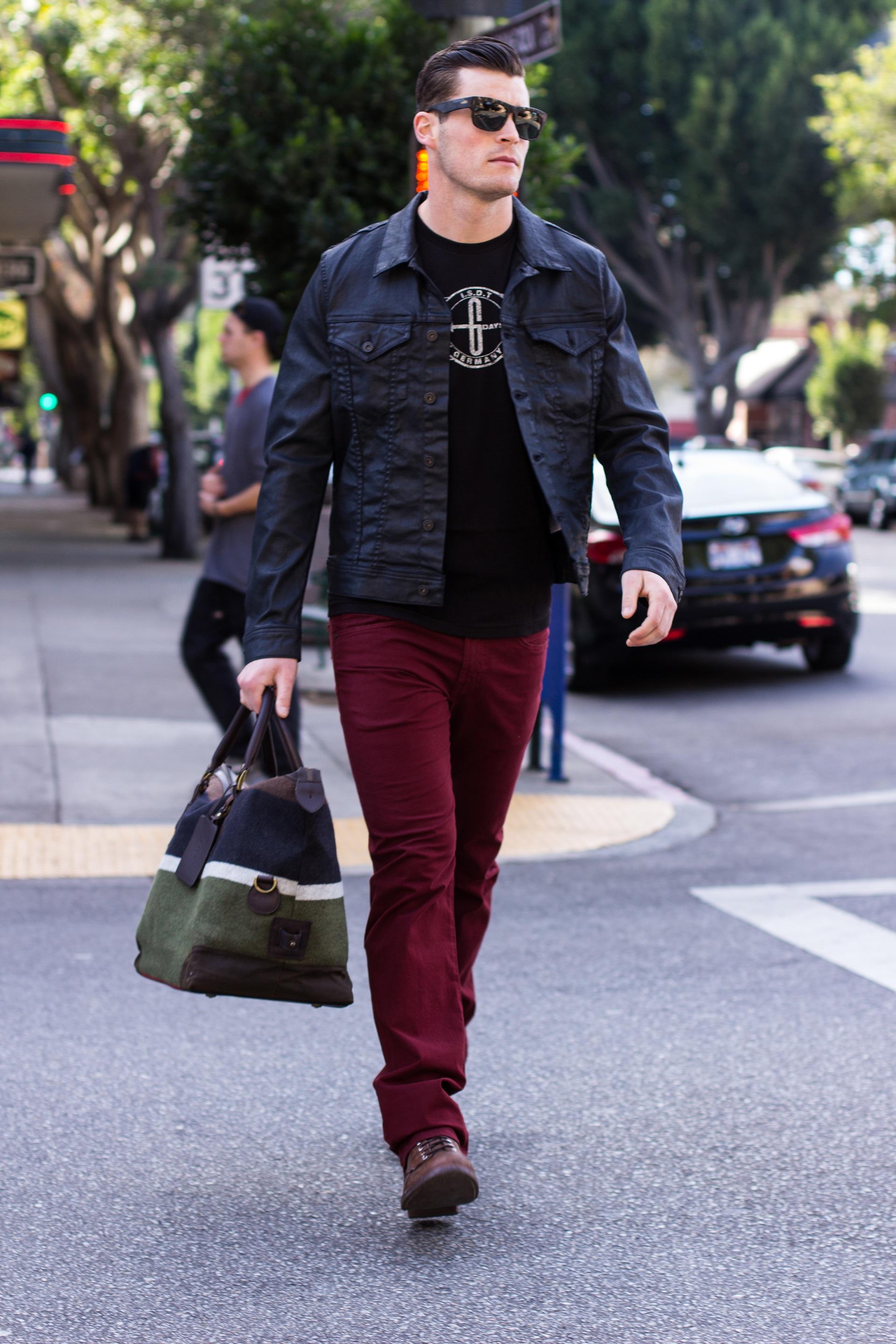





It was a dream, literally a dream—the kind you have while sound asleep—that led Dan Curcio to a life of music. Then just a boy growing up in Sacramento, Curcio had a series of incredibly vivid, vibrant dreams about playing guitar. Not sure what it meant because up to that point he had only a cursory interest in music and mostly obliged his parents by doing the piano classes they nudged him to take. But, the dreams had sparked something in him, compelling the youngster to break into his stash to plunk down the money for a cheap guitar. From the moment he first strummed the strings he was transfixed, and just about every free moment since that time has been dedicated to making music. Fast-forward to college where Curcio found himself in a Cal Poly dorm room in close proximity to four other like-minded musicians. A sixth person was added when they spotted someone playing drums on his textbook with a couple of pencils waiting for class to start. They found themselves playing together at every opportunity and at some point during a jam session in the hills behind the dorms, a band name was proposed: Still Time. Almost instantly they became a sensation with their unique “groove rock” sound that combined instruments such as harmonica, mandolin, slide guitar, and upright bass. Before long, Still Time was winning the various top bands of the Central Coast awards and drawing progressively larger crowds until they found themselves with invitations to open for the likes of Ziggy Marley, UB40, and Steel Pulse among others.
It was during a national tour that covered 37 states in four months when Curcio started to wonder if what they were doing still made sense. The reality was that all six were full-time, professional musicians and doing the math on the back of an envelope meant that this life on the road was likely to be a never-ending reality. During that trip the Poly alumni began the sad conversation about how to wind it down after eight years together. Their final appearance took place during a handful of California shows in early 2012.

Out of this experience Curcio retreated to his yurt—a circular tent-like structure—located in a picturesque Cayucos valley with a panoramic ocean view. It had been Curcio’s home base during his Still Time years and many memories of music making with friends occured there—G-Love (of G-Love & The Special Sauce) even stopped by one time for a barbeque—and it
provided solace once again. Going deep into his music and spending time reflecting on what all of this meant, Curcio came to terms with the idea of launching a solo career. After some time strumming on his guitar while gazing out at the Pacific he felt rejuvenated and ready to hit the road again.
Things went well at first, but solo work had its limitations and it was not long before Curcio, who performed under the moniker “Moonshiner,” began looking to add more depth. His first choice was long-time friend Nathan Towne, whom Curcio regards as a “musical genius” in that he has the ability to play just about any instrument. The two immediately connected, and new music flowed almost effortlessly. Moonshiner’s first album, which came shortly thereafter, was appropriately titled “Let Go.” Attracted to the music and recognizing the need for a legitimate rhythm section, drummer Zac Cornejo and bass guitar player Matt Reeder were brought in. Curcio envisioned a sort of never-ending rotation of musicians cycling through to accompany him, so Moonshiner became Moonshiner Collective.
The four current members of the collective all bring extensive musical experience to the table, and the result is a pure, clean, honest sound. Its lyrics are hopeful and positive and reflect the band’s Central Coast roots which influences its soulful, energetic vibe. When pressed to liken the music to other acts, the members suggests that their sound may be somewhat familiar to fans of Mumford & Sons, The Avett Brothers, or Ben Harper & The Innocent Criminals. The group offers that their music “intends to cut through the overexposed world of 24-hour news and Facebook feeds and seeks to take the listener to a simpler frame of mind.”
Although the first incarnation of Moonshiner Collective has only been playing together for a few short months, their inaugural show at SLO Brew in January sold out to an enthusiastic crowd. As the band now begins to line up gigs throughout California, Curcio struggles with the idea of once again leaving the Central Coast, which he calls his “security blanket” to return to the old haunts of his Still Time days. “I can see the light at the end of the tunnel, and becoming a successful band touring nationally,” he offers, “But at the end of the day, being able to play music for a living and being here in this place, I just cannot complain.”

ABOUT HALFWAY UP Hillcrest Drive in Cambria there is a sprawling home with a view—but not the kind of spread you would expect in this affluent seaside community. While very different from the “Enchanted Hill” in San Simeon, Art Beal’s place, Nitt Witt Ridge, is still charming in its own unique way.
“He came here in 1928 from San Francisco,” says current owner Michael O’Malley about Beal, “This was a bare piece of land that he paid $500 for.” Beal died in 1989 at 92 years old,
in here so he could sit and have conversations with people.” And, O’Malley can show you the crude plumbing system that worked until 1997.
O’Malley seems to know Beal may have been a bit crazy, but the new owner of the Ridge has a deep respect and affection for the guy who used to live here and wants to preserve the place just as it is. “If he didn’t like your looks he’d go out there and start shaking his fist at people and say ‘Move along, small change!’” chuckles O’Malley as he stands on one of Beal’s favorite balconies. It has a spectacular view, and you can see how a guy could feel more than comfortable here.
and most of his life was spent on this hillside building and living in this home.

Many of Beal’s neighbors and local zoning and building inspectors were not thrilled with his unplanned and seemingly unending building process. “He’d collect the rocks from the beach and the creek area,” says O’Malley, “But he’d also collect pipe. He collected all the wood. But what’s really kind of scary as you go through here—he also said he collected all the electrical parts and wiring.”
Beal may have been ahead of his time in building every inch of his abode out of recycled materials: golf balls, rocks and stones, bottles of all sorts, and beer cans. Kitchen and bathroom appliances also got a second life at Beal’s place. “He had a special use for his toilet seats. He would actually use them for picture frames,” explains O’Malley as he lifts the lid on one hanging on the wall to reveal the picture inside. Beal also constructed an outhouse with his and her matching thrones. According to O’Malley, “Beal said he put his and her toilets

Though the community was divided on whether this place was an attraction or an eyesore, Beal hung tough getting international attention from celebrities, writers and TV shows. It brought enough support from enough people that he managed to live here legally until he was into his 90’s. This cantankerous Cambria character was as much of a tourist attraction as the home he lived in. There were plenty who called Beal crazy, but he was clever enough in his design of this place to make it work rather efficiently.
And now with the property deemed a California Historical Landmark, O’Malley cannot tear the place down, even if he’d like to. He paid $40,000 for the property and intends to restore the gardens that Beal meticulously maintained. He provides tours teaching people about the guy some called Der Tinkerpaw, Old Art, or the Nitt Witt on the ridge. O’Malley says he still gets people from Russia, China, Canada, the UK, Japan and all over the United States wanting to see the place. And its location, just up the road from another famous castle, makes it an interesting pairing for tourists and locals to marvel over. For tour information and reservations call Michael O’Malley at (805) 927-2690.
Jeanette Trompeter, KSBY News anchor and reporter, hosts the “Out and About with JT” series every Tuesday evening at 6pm.
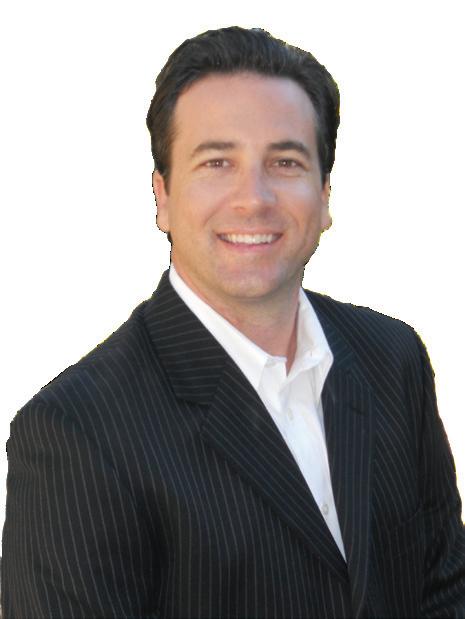
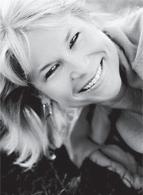
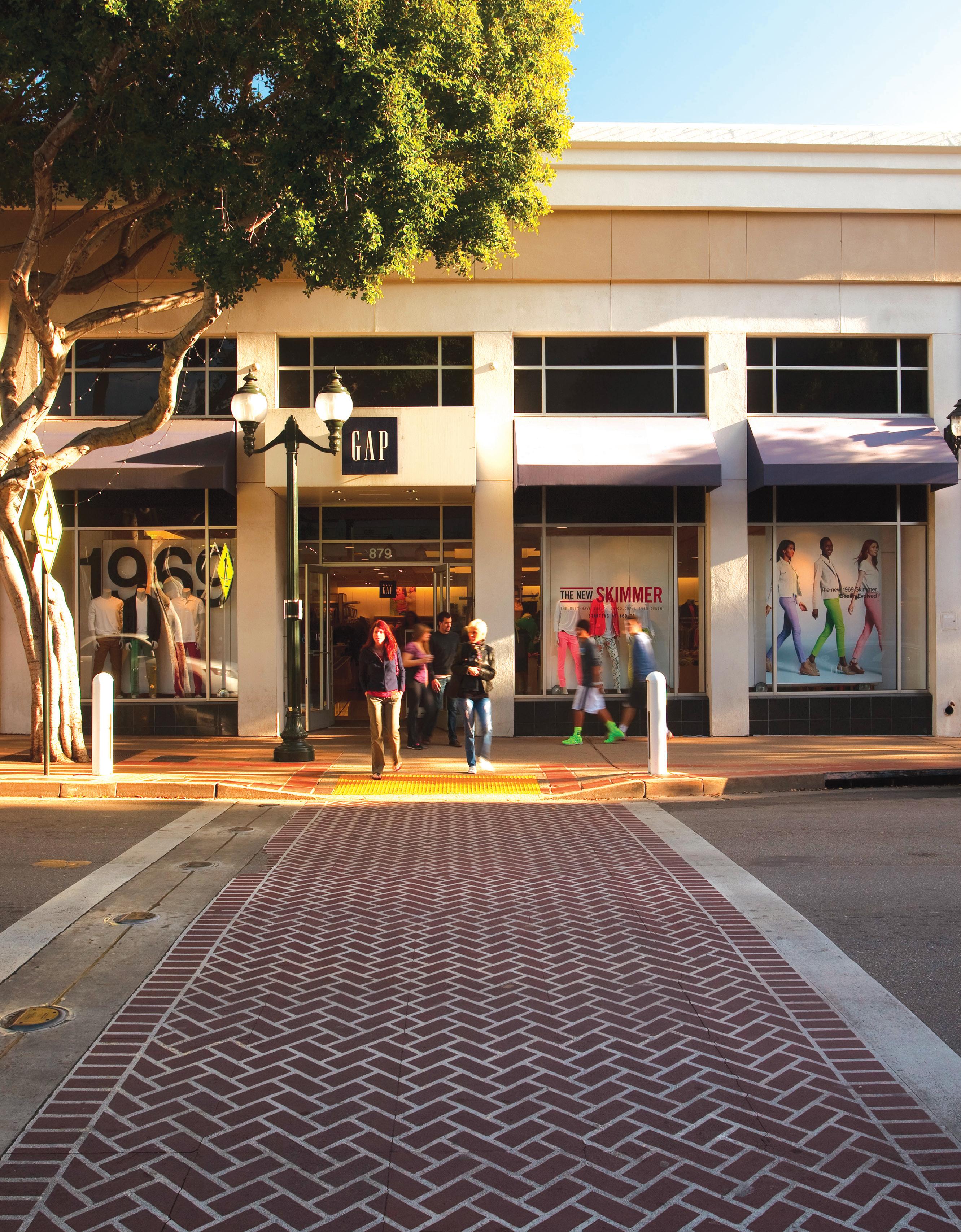

An ongoing commitment to training and education keeps Christine Thompson and the entire Salon Lux team on the cutting edge of style
Christine Thompson started her career as a hairstylist in 1989. Coming from a family of business owners, she not only wanted to create beauty for people through hairstyling and makeup artistry, but also wanted to cultivate an environment that provided outstanding quality and service to her clients. Since opening the first location of Salon Lux at 1907 Broad Street, Christine has added a second location at 1040 Court Street and welcomed a new partner, Jon Reyman, former Artistic Director of Aveda Advanced Academy in New York. Christine and Jon are now expanding their joint brand, Spoke & Weal, to San Francisco and Los Angeles.
Salon Lux has always been dedicated to the art and science of hair offered by Aveda Professional Hair Care Systems. The salon’s goal is to utilize the most up-to-date techniques in hair design. They do this by consistently partaking in classes and participating twice a year in New York’s
Lux remains on the forefront of what’s fresh and modern in hair. You’ll see the team’s work grace numerous runways throughout the
shows, all because Christine and Jon valiantly support the growth and expansion of their team’s abilities. For locals and visitors to San Luis Obispo, Salon Lux’s commitment to cutting-edge style ensures even more expert and visionary leadership for the Lux Academy programs offered at the salon. The Lux team prides themselves on their ability to offer clients affordable pricing, while having the opportunity to educate and inspire a new generation of Aveda stylists! Stay tuned, the best is yet to come.
Let the bliss begin. For only $85,* you’ll receive a 70-minute Pure Indulgence Facial, which includes an aromatherapy foot soak, customized skin care, Green Science Peel, and a delicious hand and foot massage followed by a prescription of the best products to take home for your skin! * ($110 value)

The tradition of giving flowers at Valentine’s Day is both ancient and alluring. Evidence of flower gifting—and even temples devoted to Flora, the goddess of flowers—date back to ancient Greece, Rome, Egypt and beyond. In the 1700’s, Charles II of Sweden is said to have brought the Persian “language of flowers” to Europe, enabling lovers and friends to communicate their feelings by gifting carefully chosen floral colors and classes: red for love, white for purity, yellow for friendship (or jealousy!), Ivy for fidelity, Buttercups for ingratitude—and so on. By offering different combinations of flowers, a suitor could hold
a passionate conversation in secret, without arousing the suspicions of a beloved’s watchful chaperone.
Today, though the language of flowers has been largely forgotten, the tradition of giving flowers to celebrate love remains. This Valentine’s Day, head over to Open Air Flowers on Court Street in downtown San Luis Obispo and ask owners Vance and Leslie Weber for suggestions. The Weber’s signature style and modern approach to floral design showcases their passion for premium fresh-cut blooms, interesting foliages, and the endless textures of nature.
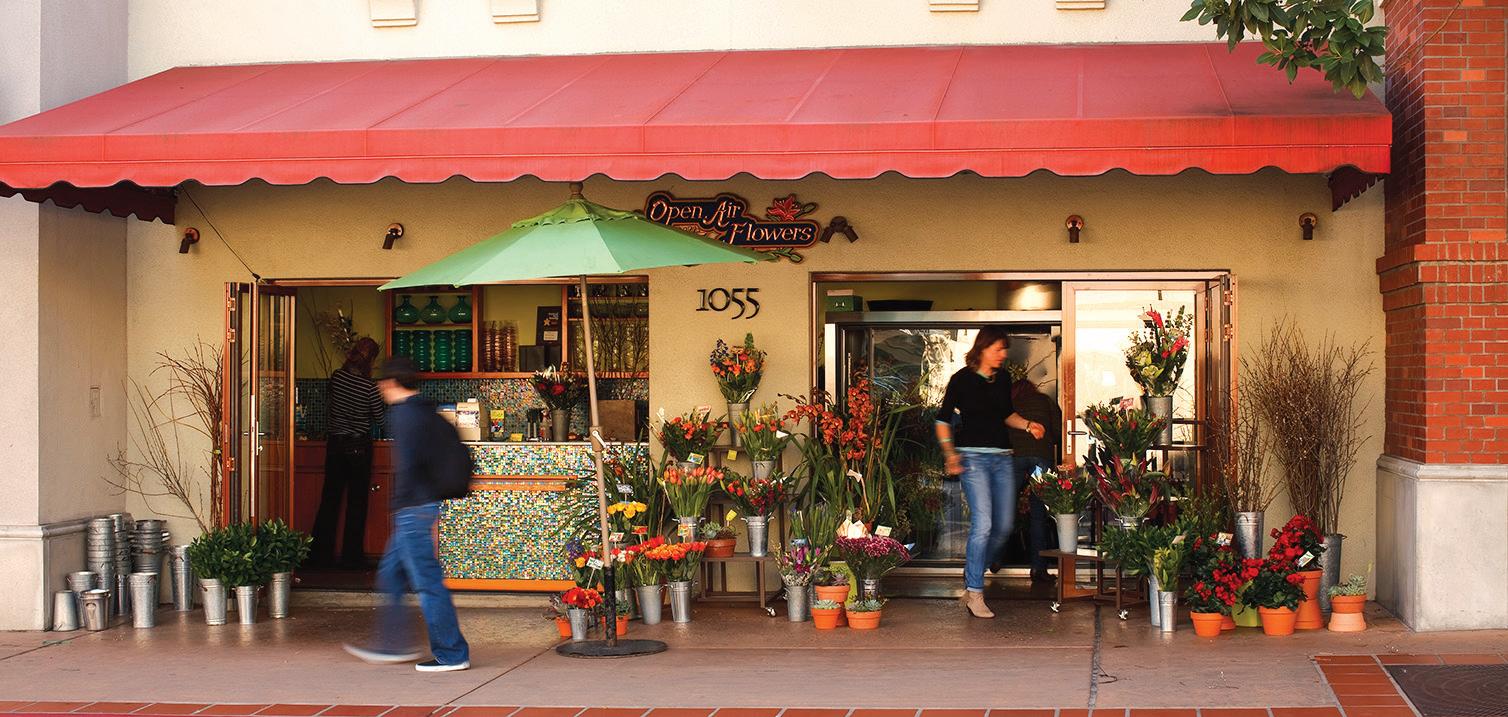
This Valentine’s season, to help you make sure your floral gift communicates what you really mean it to say, we offer just a few favorite translations from the flower dictionary that author Vanessa Diffenbaugh compiled when she was researching her novel The Language of Flowers:

Indiscretion: Almond blossoms; Joy: Cosmos; Timid Hope: Cyclamen; Coquetry: Day lily; Protection: Eucalyptus; Submission: Grass; Mistrust: Lavender; Cruelty: Nettles. Learn more at randomhouse.com/rhpg/features/ vanessa_diffenbaugh/flower-dictionary.
This past holiday season, The San Luis Obispo Collection kicked off their Rock the Holidays campaign on the Court Street terrace with local favorite Damon Castillo and the Civic Ballet. The 5-week entertainment series featured live music, theatre entertainment, and also collected toys and non-perishable food for the local NBC affiliate, KSBY-TV’s, Season of Hope campaign.
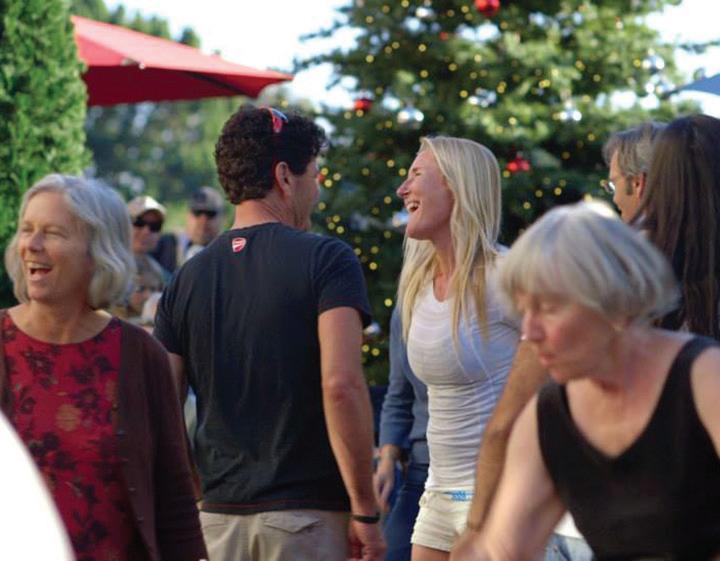


One of the benefits of traveling a lot is that, with each place I visit, I fall in love with new brands and products that I encounter. In fact, I’ve been so inspired by certain collected goods that I brought some of the best to a new retail venture, Mixson Market in Charleston. Like Star Provisions in Atlanta and Chelsea Market in New York, Mixson Market is a hip spot to get quality meat, cheese, gourmet coffee, wine and made-toorder sandwiches. More than that, the market is a community gathering space, a place where people
Abercrombie & Fitch abercrombie.com
Banana Republic bananarepublic.com
Chico’s chicos.com Express express.com GAP gap.com
Ian Saude Gallery iansaude.com Moondoggies Surf Shop moondoggies.com
Pottery Barn potterybarn.com
Solstice Sunglass Boutique solsticesunglasses.com Sunglass Hut sunglasshut.com
Urban Outfitters urbanoutfitters.com
Victoria’s Secret victoriassecret.com
White House Black Market whitehouseblackmarket.com
Bali’s Yogurt 805-594-1172
Bull’s Tavern facebook.com/bullstavernslo Chinos Rock & Tacos chinorocks.com
California Pizza Kitchen cpk.com
Jamba Juice jambajuice.com
Palazzo Giuseppe palazzogiuseppe.com Pizza Solo pizzasolo.com
Sal’s Paradise slosals.com
SloCo Pasty Co. slocopastyco.com
Splash Cafe Seafood & Grill splashcafe.com Starbucks starbucks.com
SERVICES Sephora sephora.com
Salon Lux-Aveda salonlux.com
The Apple Store apple.com Barnes and Noble barnesandnoble.com
Cal Poly Downtown calpoly.edu
The Movie Experience themovieexperience.com
Open Air Flowers openairflowersslo.com Papyrus papyrusonline.com
Powell’s Sweet Shoppe powellsss.com
Man-about-town George Krauth dishes on the fashions, flavors, designs and décor he discovers as he travels the globe tracking trends as Creative Director and VP of Creative & Marketing at Jamestown, LP.
can relax over a cup of coffee or shop for amazing housewares like wool blankets, Herschel Supply Co. backpacks, Falconware enameled plates from the UK, cookbooks, and vintage French bread boards.
In addition to uncovering high-quality product, I also relish the distinctive marketplace communities I find in both small and large towns. Dynamic community experiences like SLO’s Thursday farmers’ market have definitely

inspired Jamestown’s placemaking. The music, the barbecue and other great street food, the seasonal decor, amazing produce, and one-of-akind artisanal goods create exactly the kind of local experience that makes a place unique. Learn more about Jamestown, owner of the The San Luis Obispo Collection, by exploring our other fine retail destinations, including Westside Provisions District, Warehouse Row, The Newbury Collection, and more.
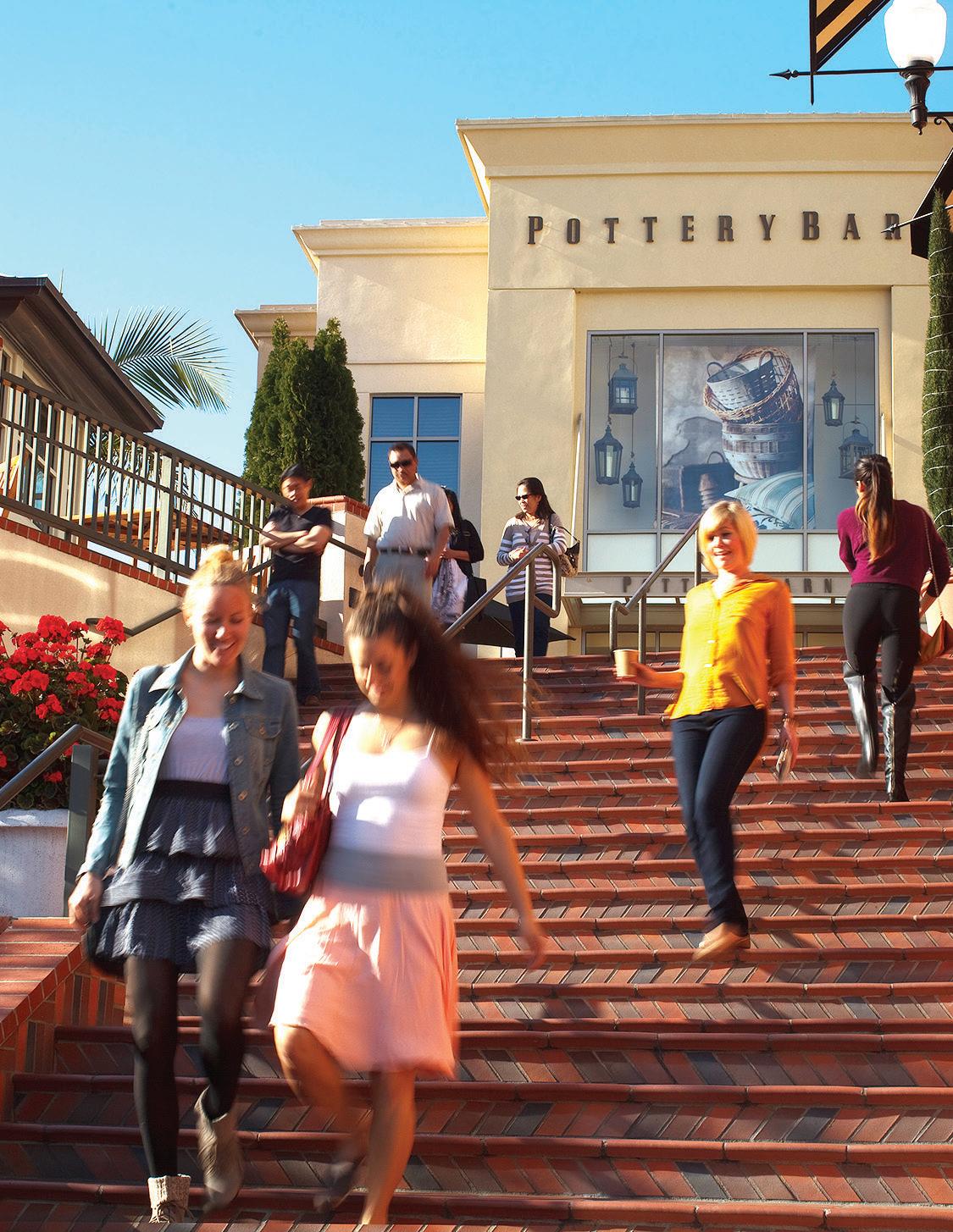













We don’t necessarily agree with everything we read in the Wall Street Journal, but when they named Daisy House® three-piece set of bamboo towels the best overall, they were right on the money! Whether you’re shopping for a housewarming or a wedding gift, or just treating yourself, this is one investment that will repay you with years of dividends.
$55.95 // Bambu Batu // 1023 Broad Street, San Luis Obispo (805) 788-0806 // bambubatu.com
This modern barstool offers fresh styling and a touch of class with its graceful curves, top grain leather seat and nail-head trim. Crafted in light oak, the stool’s excellent quality transitional furniture design will serve you well for many years. Varying heights and colors available.

$349 // San Luis Traditions 748 Marsh Street, San Luis Obispo (805) 541-8500 // sanluistraditions.com
The colorful and creative pottery of Hector “Pachanga” Montoya reveals itself with a variety of handmade designs from tabletop to floor-standing in an array of beautifully created rustic finishes. Imported directly from Jalisco, Mexico.

$39 - $199 // Luna Rustica 2959 Broad Street, San Luis Obispo (805) 546-8505 // lunarustica.com
Little boxes, big boxes—for her jewelry collection and other treasures. Each unique chest is made of recycled exotic woods, designed and hewn by Los Osos artisan Jim Amberg.

$20 - $220 // Fiona Bleu Gallery // 900 Embarcadero, Morro Bay (805) 772-0541 // fionableugallery.com
Yogitoes eco-conscious towels feature groundbreaking, patented silicon dot skidless technology that will grip your mat and prevent slipping no matter how much you move or sweat. It will provide a comfortable, absorbent, stable and hygienic layer between you and your yoga mat.

$64 // Assets // 853 Monterey Street, San Luis Obispo (805) 781-0119 // sloassets.com

San Luis Obispo-based Lisa Leonard’s whimsical handcrafted jewelry make chic, sentimental pieces that go with any ensemble and the “Joining Hearts” elegant necklace is no exception.

$42 // Hands Gallery // 777 Higuera Street // San Luis Obispo (805) 543-1921 // handsgallery.com
Jan Michael’s jewelry is exquisitely hand-crafted in San Francisco, made of brass and an array of semi-precious stones. Original designs inspired by her travels combined with a love of ancient worlds from the past.

1022 Morro Street, San Luis Obispo 840 11th Street, Paso Robles // (805) 784-0664 shopapropos.com
This Valentine’s Day give her a thousand flowers with the gift of millefiori beautiful glass jewelry. Originating on the island of Murano in Venice, Italy, millrfiori is a technique that produces distinctive flower-like patterns on glass. This Murano glass millrfiori is combined with sterling silver into stunning works of art.

$24 - $70 // Turn To Nature // 786 Higuera Street, San Luis Obispo (805) 540-3395 // turntonature.com
Spring comes early this year! Set in a plethora of luscious and lively colors “Etoile III” sapphire stacking rings are perennial favorites. Select from what is in-store or special order.

$1,095 - $1,495 // Ian Saude 1003 Osos Street, San Luis Obispo (805) 784-0967 // iansaude.com
A Sons of Trade bag is for life. Ruggedly versatile and built to go the distance. Crafted with precision in Ventura, this Rubicon Rucksack in distressed brown leather is both a nod to our proud past and a glimpse of our future.

$365 // Jules D. // 672 Higuera Street, San Luis Obispo // (805) 781-0722 // jules-d.com
Archetype Collection bands are cast individually using one of three different colors of recycled 18K gold and set with conflict-free diamonds. Designed to stack flush and lock together for a cohesive look, they can be worn alone or with other styles of stacking rings for a fresh, modern look.
$880 - $2,080 // Baxter Moerman Jewelry 1118 Morro Street, San Luis Obispo (805) 801-9117 // baxtermoerman.com

AFTER READING a copy of her book, Lost in Transplantation: Memoir of an Unconventional Organ Donor, many more questions come to mind. But, still, the most nagging one remains: Is she for real?
The story begins with the 48-year-old Edwards returning to school. The opening scenes describe her adjusting to life as a student at Cuesta College. While there, she befriends one of her classmates, Lucy, who is thirty years her junior. As the two of them settle in for lunch on campus one day prior to their study session, Edwards observes that Lucy is a vegan, she eats no animal products of any kind. When she asks Lucy why she has chosen this diet, “Are you vegan for ethical or health reasons?” The young woman answers, “Both I guess. I have kidney disease and animal proteins are harder for my body to process. I look at my diet as medicine for my illness.”
That exchange led Edwards on a multi-year journey of twists and turns as she navigates layers upon layers of red tape found in the current American organ donation system. The simple lunchtime conversation ultimately leads to Edwards donating one of her kidneys to a perfect stranger.
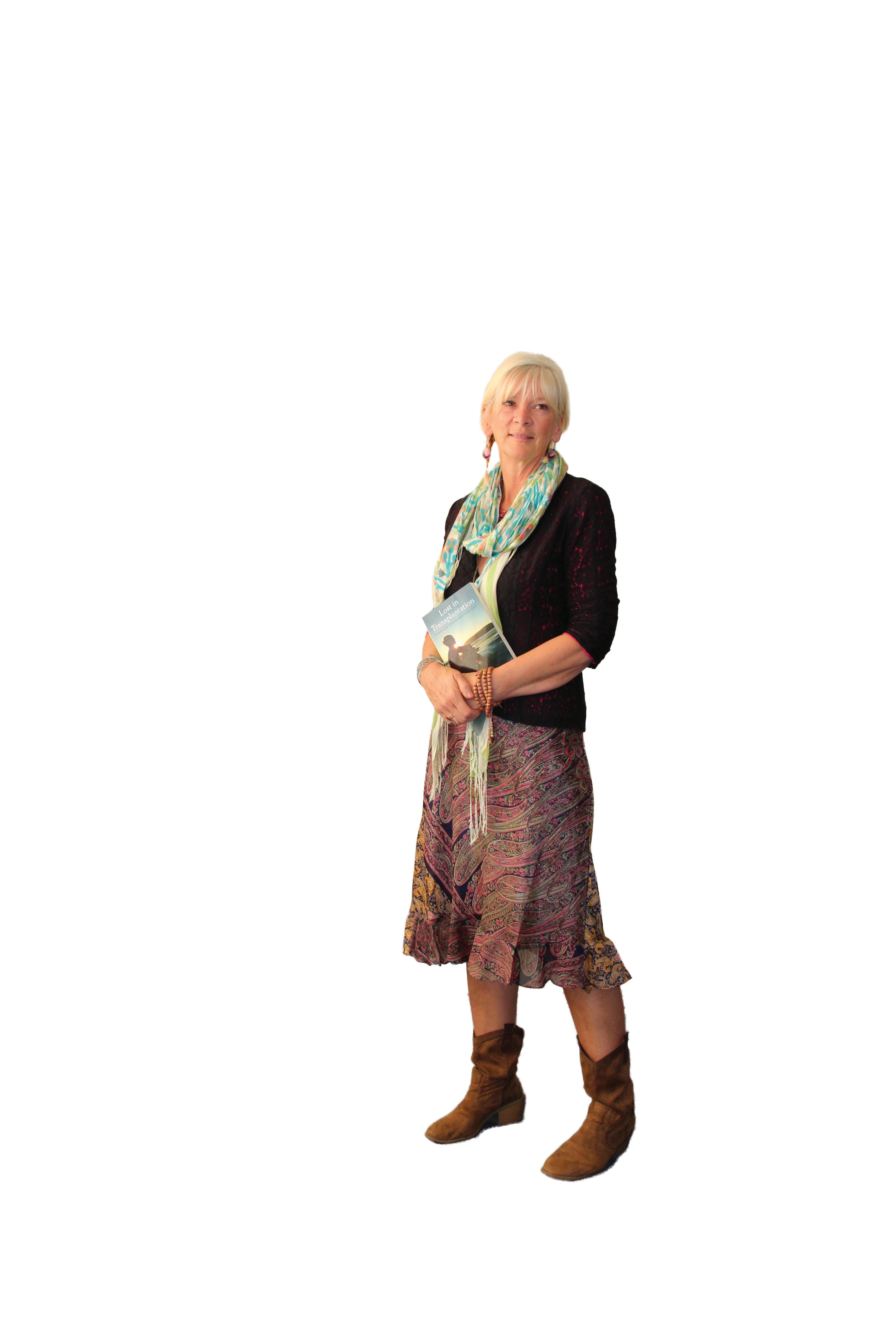
In a beautifully written—Edwards has extensive experience teaching writing— autobiographical, first-person stream of consciousness offering, Lost in Transplantation is a hugely compelling page turner. From the moment the idea first enters her mind to donate a kidney to Lucy “… it was as if a transformer blew up in the center of my being as Ghandi’s famous words bubbled up to the surface: ‘Be the change you want to see in the world.’ Like
a mantra, be the change, be the change, be the change played over and over in my head…” What follows is another dialogue with Lucy where Edwards encounters the first of many roadblocks to donation: even if she had been a blood type match with Lucy, since she is not part of her family, she would not be allowed to donate to her directly.
Undeterred, Edwards took up the subject in another class where she dove into a lengthy paper exploring the “flawed system of organ allocation.” As part of her research she stumbled upon a donor matching website where she reads through scores of patient profiles, many of them incredibly gripping. But, as she clicks on the page of a woman named Kathy, Edwards begins to hear that steady drumbeat in her head once again: be the change, be the change. The kinship she feels with this woman—a total stranger—is almost immediate. As she scrolls down her profile, she begins to see herself in Kathy. The two share the same political leanings, both of them on the left side of the spectrum, and both are of the nurturing sort. Edwards is a massage therapist and Kathy is a hospice nurse.
The book leads the reader through many twists and turns as Edwards, a single mother, struggles to make ends meet and provide a roof overhead while also following through with her conviction to be the change. Edwards skillfully weaves a tale proving that fact is often stranger than fiction. After becoming engrossed with Kathy’s profile, Edwards describes the moment she hit “submit” on her correspondence. “From that moment forward I went from being a casual community college student writing a paper for class, to a woman on a mission to make a difference in someone’s life. Someone I
When you first meet Eldonna Edwards, one question comes to mind: Is she for real?
didn’t (yet) know. Someone named Kathy.” After sending the message, which indicated that she was a match to her rare blood type (B+), Edwards then received a message back. As the two become acquainted, the bond strengthens, but not just between the two of them, but also between the two women and the reader. Again and again Edward’s skill as a writer demonstrates what a gifted wordsmith can do with a nearly unbelievable series of real life events.

Following setback after setback, mostly involving insurance companies, Edwards finally receives approval to have a full panel of testing completed to ensure that the two are, in fact, a good match. [Spoiler Alert! Stop here if you intend to read the book.] As Kathy’s condition continues to worsen and she spends more time in dialysis, as much as five hours a day at this point, the pair learns that Kathy has certain antigens that would prevent a successful transplantation. While she quietly accepts her fate, Edwards continues to push forward, her mantra still rattling around in her head: be the change. Against the backdrop of a growing friendship, Edwards learns of a “paired match” program, which allows for a type of double swap. In other words, Edwards would be allowed to donate anonymously and her designee, Kathy, would in turn receive anonymously.
As she settles into her hospital gown, the transplant team completes their final survey by asking Edwards pointedly if there was some place she would prefer her kidney not go. She jokingly retorts, “I’d rather it not go to Dick Cheney.” With her humor intact Edwards is rolled into the operating room and her kidney soon catches a plane to New Jersey. Although the donor and recipient are required to be sequestered and must remain purely
When 48 year-old single mother, massage therapist and returning student Ellie meets a young woman with kidney disease, she decides to make it her mission to save the girl. Unfortunately, outdated rules made it difficult for altruistic donors, and besides, the woman doesn’t want a savior. Does this stop Ellie from her quest to “be the change” one seeks in the world? Not a chance.


Told with humor and self-reflection, this inspirational memoir of courage and compassion is interwoven with anecdotal stories that help the reader identify what kind of person commits the selfless act of organ donation. Ellie,a self-described devout agnostic, is kind but often irreverent. She is generous, but she is no saint. Ultimately, becoming a kidney donor has given her a renewed sense of purpose and fulfillment. Lost in Transplantation asserts that we are all capable of altering a human being’s life for the better, including our own.
Eldonna Edwards is the author of two previous books, Journaling from the Heart and Loose Ends. Her memoir, Lost in Transplantation, chronicles a life-changing decision to donate a kidney to an ailing stranger. Eldonna currently lives on the central California coast where she practices massage therapy and advocates for living organ donation. Her debut novel is planned for publication in 2015.
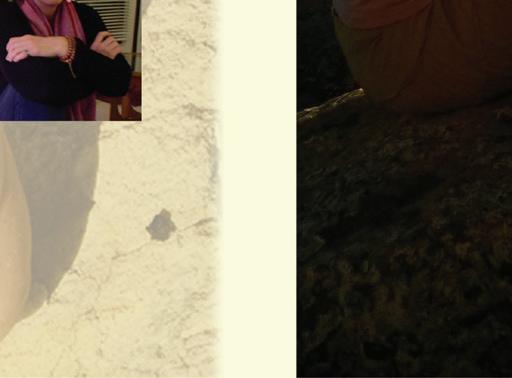

anonymous, Edwards convinces a healthcare worker to pass along an “adoption letter” because she wanted the recipient “to know that the kidney came from a good home.”
Whole Heart Publications www.wholeheartpublications.com
She signs the letter “Eldonna,” and four years after first hearing Lucy’s story at the Cuesta College cafeteria and resolving herself to be the change, Edwards had saved the life of a 58-year-old man on the East Coast.
Months later, a message popped up on her Facebook account from someone she did not recognize. Her heart skipped a beat when she realizes it is from New Jersey. The man goes on to express his overwhelming gratitude. He also shares that when he received the news that he was to receive Edwards’ kidney, he had been writing down the arrangements for his own funeral. The two continue to correspond when they learn that they are diametrically opposed politically.
In a cosmic twist of fate, he describes himself as the “next best thing to Dick Cheney.” Edwards learns that the man’s wife, through the paired match program had also donated anonymously and had saved another life, while Kathy, a year later, receives a kidney from a brain-dead donor. In the end, everyone ends up with a happy story. And, Edwards grows and learns so much about humankind and about her own deep well of strength along the way. And the reader learns that Edwards is, in fact, for real; but, not in the same way that Ghandi was real, more like in a way that a neighbor is real. Yet, despite her conviction she is also imminently vulnerable and refreshingly relatable, which makes her story that much more readable—and the be the change that Edwards was after, may very well be what happens to the reader after finishing her book. SLO LIFE
THE FIRST LOCAL release of Lost in Transplantation will be available at the Steynberg Gallery in San Luis Obispo on Sunday, February 23rd where Edwards will be on hand at 3pm to sign books. The book is also available for purchase at Amazon.com where it has yet to receive less than a 5-star review.
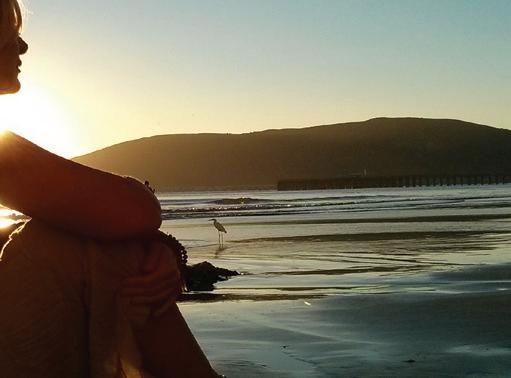
THIS STORY ALSO captured the imagination of Jan Krawitz, who is a highly regarded documentary film producer. Krawitz adapted Lost in Transplantation to the big screen in a movie called Perfect Strangers. A trailer is available to view at perfectstrangersmovie.com and the full documentary will be screening at the SLO International Film Festival. Check slofilmfest.org for the schedule.
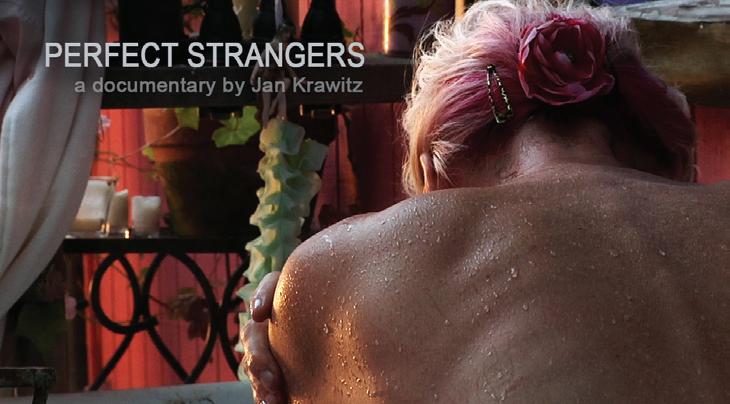
… it was as if a transformer blew up in the center of my being as Ghandi’s famous words bubbled up to the surface: ‘Be the change you want to see in the world.’ ”
There is so much to love about the Central Coast, and I truly cannot imagine living anywhere else. But, I have to be honest. I have always had some lingering doubts about the wisdom of living so close to a nuclear power facility. And, now being really, really honest… I prefer not to think about it, because when I do my mind goes to weird places and visions of mushroom clouds dance in my head. I have heard all of the arguments for and against nuclear energy, and I can understand both points of view. But, at the end of the day, I am a hands-on, visual learner sort-of-guy. I need to touch it before I “get it.” With that in mind, and wanting to for once and for all really “get it,” really understand nuclear power, really understand the realities of living next to such an awesomely powerful generator, I decided to head out to Diablo Canyon to see it for myself. And I would like to invite you to come along with me...
It’s another stunning, crystal clear morning on the Avila Bay. And as we crest the summit in our unmarked, white SUV, I strain to look around the bend for the distinctive nuclear domes. But, nothing can be seen except miles of unblemished coastal bluff. With the exception of some cows roaming the hills, the land is pristine, untouched. As we drive along further and further, I begin to look at my watch, and like my four-yearold son, I ask the question, “How much longer?” I was surprised by the vast area of land Diablo inhabits, the majority of which is designated by its owner, Pacific Gas & Electric (PG&E), to be in its “natural state.” The company is quick to use the term “steward of the land” as opposed to “land owner” in describing its role with the 750-acres south of Montaña de Oro known as Diablo Canyon. With the exception of an impeccably maintained paved road and a series of corporate signs encouraging “Safety First,” it would be impossible to know if it were 2014 or 1714. The surrounding land is truly majestic in its rugged naturalness.
Rounding the last corner and dropping down a slight grade, the power plant finally comes into view. My most notable observation is that the two domes that clearly identify a nuclear facility seem like such a small part of the overall picture. The landscape unfolding before me was one of a small town with people doing all the activities necessary to keep a small town running. Off to one side, a crew was working on what appeared to be sewer pipes. To the left another group was pushing some dirt around with a small Bobcat tractor. At this point, my note-taking is interrupted by a security guard at a checkpoint who leans into my window and politely asks me to step out of the vehicle and hand over the backpack and camera sitting between my feet on the floorboard. After a quick inspection, my possessions are returned. “Okay, you’re all set,” he says, “Welcome to The Machine.”
In 1938, a German chemist named Otto Hahn was messing around in his Berlin-based “Holzwerstatt” (woodworking shop) with some radioactive material when he began to see things that he did not expect. When the nucleus of radioactive material was divided, a massive exothermic reaction occurred. In other words, a whole lot of energy was released from one very small bit of matter. More intriguing still, the matter did not seem to breakdown as expected. Rather than taking on the properties of something like a log in a fireplace—which soon turns to ash—the radioactive material kept going, and going. Hahn, who came to be known as “the father of nuclear chemistry” continued to experiment in his little workshop. Over time he began to realize the implications for what he had discovered. In an ironic twist, Hahn was awarded the Nobel Peace Prize in 1944—just one year before his discovery led to the instant vaporization of nearly a quarter of a million Japanese civilians.
While the atom bomb brought an end to hostilities in World War II, it also marked the unofficial beginning of the Cold War. Although the United States and the Soviet Union had been allies up to that point— mostly in the sense that “the enemy of my enemy is my friend”—the awesome power unleashed over those two summer days in Hiroshima and Nagasaki was perceived as a clear and present danger to the Kremlin. And almost immediately after Stalin received his first account of what happened in Japan, he likely whispered to himself: “We need one of those bombs.” From that point forward, the Soviets scrambled to arm themselves in the same way that their American foes had, and if one was good, two would certainly be better. Eventually the Cold Warriors would reach a point where they would be able to blow each other up, as well as the entire planet, many times over.
While the saber rattling hawks involved in the silent conflict where pushing to escalate the Arms Race, others began to see nuclear power in a different light. Their question was not, “How can we obliterate more commies?” But, what if we used this stuff to generate our electricity?
Since nuclear power has a 1+1=3 quality to it, in that a very small amount of matter produces a massive amount of energy, why not use it in a way that would benefit mankind. Interestingly enough, the US Navy, by 1954, had figured out a way to keep its submarines under water for a very long time: small onboard nuclear reactors. As the USS Nautilus was keeping a watchful eye on Soviet frigates in the Bering Sea, scientists stateside continued to press the question: Why not use nuclear to power our homes?
After clearing the second security checkpoint, we parked the car and walked toward the main entrance, stopping for a few minutes to watch a beautiful, continually looping video produced by PG&E in the visitors lounge. We then moved on to the employee entrance. There I turned over my driver’s license and was subjected to another search, this one more thorough. After verifying that the background check I had submitted a week prior had cleared, I was led through a full-length turnstile complete with metal detection. When the green light on the top of the steel cage flashed “Ok,” I heard a loud “click” and the lock automatically opened. On the other side, a machine gun wielding guard sporting all black commando gear did a full pat down, including waving a metal detecting wand over every square inch of my person. At that point I was handed back my notepad, digital voice recorder, and camera with explicit instructions on what I could and could not photograph at the plant.
With “Visitor” highlighted clearly in yellow across the top of my I.D. badge now hanging around my neck, we exited the security pavilion and headed toward the six-story office building that sits next to the two concrete domes. After an elevator ride to the top floor, we made a left and then a right turn down two long corridors to find ourselves outside of a non-descript conference room. A mustachioed, middle-aged man with closely cropped chestnut-colored hair whose nose bridge is slightly askew to the left, stood up from the long Birchwood table with his right hand outstretched. “Hello, I’m Ed Halpin, Chief Nuclear Officer.” If there ever was a Wizard Oz at Diablo Canyon, this is the guy.
In a slow, rhythmic cadence Halpin begins ticking off facts and figures with an accent that reveals a Long Island upbringing. After each point he pauses to allow me to keep pace with my note-taking. “There are one hundred nuclear power plants operating in the United States right now with five under construction, and they provide about 19% of the electrical demand.” The bullet points continue. “Throughout the world there are 435 nuclear
power plants, and 72 are under construction. And those numbers continue to grow every year because, quite frankly, the world is turning more toward nuclear to reach its power demands. It’s reliable, it’s safe, it is a powerful technology and, yet, it has to be correctly controlled. And, it is friendly to the environment. So, for the big picture, we will not achieve what we want to achieve with regard to greenhouse gas reductions without nuclear power.”
Halpin, a champion Naval Academy boxer in the 125-pound weight class who once entered the ring with an already broken nose, has answers for all my questions. And, he does not so much as flinch or even gesture with his hands to answer them. “What about Fukushima? Couldn’t that happen here?” “No,” he states flatly. “And, here’s why. I just came back from Fukushima and the reason for their problems was due to the fact that they did not have sufficient redundancy. They did not have the ability to cool their reactors because their pumps were taken out by the tsunami,” Halpin explains. “But, what about us? What about a tsunami happening here? And what about the fact that Diablo sits near a few different fault lines?” I ask. Point by point, Halpin breaks it down with a list of calm, cool responses: “Tsunamis are not possible to the degree it happened there.” Seismic modeling shows that the largest tsunami possible would produce a 45-foot wave surge at Diablo. The cliffs there are 85-feet high. “The fault lines near Diablo are the most studied in the world, and Hosgri’s strongest possible earthquake would not be a problem for us. Besides that, assuming the worst case, we have many layers of redundancy.” Following the discussion of Fukushima, I ask the question: “What about the spent fuel rods?”
A single fuel pellet of U-235 (low-enriched uranium) is about the size of two number-two pencil erasers stacked on top of one another. One of those pellets provides the same level of fuel as one ton of coal. A fuel rod consists of 375 of those pellets. And, 264 rods make up an assembly, with 193 assemblies per reactor. Each of those assemblies employs a mechanism to automatically disengage the pellets should the internal temperature rise beyond its normal zone or if it detects any seismic movement. Naturally occurring uranium—one-third of the world’s supply is mined from the mountains of Kazakhstan—is .72% U-235. It is then enriched to between 3% and 5%, which is what supplies nuclear power plants. In order for it to be weapons grade uranium, it must be enriched to 90% U-235. In other words, it is not possible for Diablo Canyon to produce a mushroom cloud.
Yet, there is still a lot of radioactive waste, which makes it difficult to take the intellectual leap suggesting that nuclear is “friendly to the environment.” Contrary to coal-fired plants, where carbon emissions escape into the atmosphere, Halpin is fond of saying, “I know where my waste is.” And, he does make a good point. The average coal-fired power plant generates an estimated 125,000 tons of ash and 193,000 tons of sludge each year, which goes along with a long list of toxic substances including mercury and arsenic. At Diablo Canyon, where there are no carbon emissions emanating from its power generation process, the waste sits up on the hill in Easter Island-like concrete reinforced containers awaiting further instructions. And, as it turns out, there’s gold in them thar spent fuel rods.
After they are removed from the reactor and deemed “spent,” fully 90% of the fuel remains in those U-235 pellets. Through reprocessing it is possible to take the remaining energy and essentially recycle it to recharge the fuel pellets. Despite the fact that ten other countries currently reprocess their spent fuel, in the United States it has been somewhat of a political football. In the 1970’s, fearing the weaponization of reprocessed fuel, the Carter Administration decided to punt. And, since that time there has not been the political will to restart the conversation in a meaningful way. John McCain, during his failed presidential bid in 2008, was the last big-name politician to make a full-throated case for reprocessing. As it stands now, according to Halpin, if you were to take all of the spent fuel from every United States-based nuclear reactor over the past 40 years, it would fill a football field to the height of the top of the goalposts. That waste now sits patiently awaiting a trip to the promised land—somewhere like Yucca Mountain, a depository for spent fuel that the feds continue to dangle just out of reach—or some other facility where it could be reprocessed and brought back for a second shot at life inside a reactor.
In 1969, a local woman put a pen to paper imploring Central Coast residents who shared her “sadness and frustration at the needless loss of life in Vietnam” to join her in “searching out ways to act effectively as a group.” Her letter to the editor resonated throughout the community and shortly thereafter, in an undersized San Luis Obispo living room, Mothers for Peace was formed. As the women coalesced around their collective efforts to apply pressure on politicians, the Southeast Asian conflict began to wane. Then, in 1973 the non-profit shifted its attention to the safety of the newly built Diablo Canyon Power Plant and has been a thorn in the side of the operation ever since. Raising hell at every turn, the mothers— many of them now grandmothers—serve as a scrappy, perennially underfunded local watchdog. One of its members, Linda Feely, is as comfortable discussing highly technical nuclear concepts as she is talking about shopping for bargains at Patagonia’s headquarters in Ventura. “The thing about the NRC [Nuclear Regulatory Commission] is that they are 85% funded by industry—the people they are supposed to be watching. Now, you don’t bite the hand that feeds you, right?”
Interestingly, Mothers for Peace currently puts the thrust of its focus on the opinion of an NRC inspector. From 2007 to 2012, Michael Peck was the senior resident inspector for the NRC at Diablo Canyon. During his time there, he began to question the way PG&E was making its assumptions for earthquake projections. In short, he argued that the network of fault lines around the plant were capable of producing a much more powerful seismic event than was being forecasted as a worst-case scenario. Because he found Diablo was not suited to withstand the level of earthquake he thought was possible, Peck formally recommended citing the plant for being in violation of its licensing agreement, which could have led to its closure. That report was written in September of 2011—by October of that same year, the NRC sided with PG&E’s findings in its Research Information Letter (RIL) deeming Diablo safe to operate. Nine months after writing his Dissenting Professional Opinion refuting the RIL, Peck was transferred to Chattanooga, Tennessee. He insists that it was not a punitive move on the part of the NRC, and continues to this day to assert that PG&E’s assumptions about the potential for seismic activity around the plant are faulty.
Over the past four decades Mothers for Peace has amassed a small library of documentation stressing the dangers of Diablo Canyon, and just about every time PG&E releases a study, the group finds ways to poke holes in it. Another area that has raised their collective eyebrows is concerning the use of high burn-up fuel. Jane Swanson, who has been with Mothers for Peace since the beginning, speaks passionately in twenty-minute blocks about the dangers of high burn-up fuel—a type of uranium pellet that allows for more time to pass before it must be replaced. For lack of a better way to describe it, high burn-up fuel is like the high-octane gas you buy at the fuel pump. Yes, it is more expensive, but it is more powerful and gives you better gas mileage. The better Diablo’s gas mileage, the less downtime there is, which means that PG&E sells more kilowatts. Except, according to Swanson, the spent pellets come out much hotter and take much longer to cool. The first stage of that cooling process, when they are placed in a sealed container and submerged underwater inside the plant, is when they are most vulnerable, she claims. “Diablo was not built with high burn-up fuel in mind; it burns hotter, comes out hotter and more radioactive than the plant was designed to handle. And, what if something happens to those pools?”
As we enter the main power generation room, I first realize that nuclear power is just another way to boil water. Before me, I find two massive steam-powered turbines. It is here that I am able to get real hands-on experience at Diablo Canyon. While I watch the shaft on one of the turbines turn many thousands of revolutions per minute, I am told that the facility generates 2,300 megawatts of electricity, enough to power the equivalent of 3 million homes, or 10% of California’s total energy demand. Diablo’s twin steam turbines—both originally built in 1975—could just as easily be sitting in a coal-fired plant somewhere, as the mechanics involved in turning its gigantic flywheels are the same: boil water using some type >>




of heat source, whether it be coal or uranium, and allow that steam to build to a very high pressure which then turns the shaft. The shaft, which is connected to a series of brushes and wires creates friction, that friction then spawns electricity. That electricity is then sent out to the grid. Officials at PG&E like to say, “If Diablo Canyon were a conventional power plant, it would burn 220 train cars full of coal each day.”
As the tour continues through the belly of the beast—it gets hotter, dryer and louder the deeper we go—I find myself wanting to get a closer look at all those spent fuel rods. I am told that after five years the U-235 pellets are considered spent, and there is an elaborate process for partially shutting down the plant, extracting those pellets and placing them in what looks like an Olympic-style swimming pool for cooling over the course of many years. Once the U-235 cools, it becomes less radioactive and the pellets are then taken from the pool and placed in a dry cask outside the facility. Standing at 19-feet tall and 32-feet in diameter with 8-foot thick steel and concrete walls, the dry casks are bolted down on bedrock at the back of the facility, 310-feet above sea level. They are watched by armed guards around the clock. The scene looks something like a San Quentin for uranium, complete with barbed wire fences and machine gun toting sentries. The juxtaposition of the casks against the bucolic Central Coast hills, did strike me as strange and unnatural, but the level of attention they were receiving provided some degree of comfort.
As I handed over my ID badge and made my final exit through a radiation detecting scanner, I stood there reflecting on my day. The light turned green and I was deemed “clean,” so I gathered my things. During my visit, I learned a lot about nuclear power and did not find anything that raised my immediate concern. Actually, I felt much more confident knowing that there is a group of highly intelligent people running the place. But, there is a saying in military circles that “armies are built to fight the last war,” and I could not help but wonder if that were the case at Diablo Canyon. I mean, prior to 9/11 who could have ever imagined that a rag-tag group of extremist would fly a pair of commercial jets into the Twin Towers. And, who would have ever thought that Fukushima would meltdown before our eyes in the wake of a 45-foot tidal wave. And, what about Three Mile Island and Chernobyl? Weren’t the smartest guys in the room providing scientific studies back then assuring us that nothing could possibly happen to those places, too?
One thing I do know is that all of the discussion during my visit was concerning electricity supply, which makes sense because PG&E is a power producer. But, with all of the hand-wringing that takes place locally over Diablo Canyon, and nuclear power in general, why is there not a substantive conversation about reducing demand, in other words conserving? In remembering my grandparents—products of the Great Depression who were constantly turning off lights carelessly left on by their grandchildren—I wonder why, instead of worrying so much about Diablo, we don’t figure out a way to use less of the stuff they are making out there. Or, is that even possible? Is the proverbial horse out of the barn for good? Is the lure of the 70” flat screen TV too strong to avoid flipping a U-turn in our Teslas and Chevy Volts now? Or, is there another way? Is distributed power, setting up individual solar and wind units at home, versus centralized power, through utility companies like PG&E, the way of the future? Again, I don’t have the answer. But, the one thing I do have an answer to after my day out at Diablo, is that all of us have the right, and the responsibility, to keep a close eye on what goes on out there. To borrow the words of Ronald Reagan—a steadfast advocate of nuclear power—who in negotiating with the Soviets adopted the Russian proverb “doveryai no proveryai;” in other words, it is incumbent upon us to “trust, but verify.”
PG&E offers limited tours of Diablo Canyon which are considered on a case-by-case basis. If you are interested in learning more, please call (805) 546-5280 or email EnergyEducationCenter@pge.com

What are your thoughts on Diablo Canyon? Be part of the conversation by emailing us at info@slolifemagazine.com

 BY PADEN HUGHES
BY PADEN HUGHES
MUCH HAS BEEN written of the legendary fog of San Francisco— George Sterling described it as “the cool grey city of love”—and much like the city residents, those living in the fog-riddled town of Los Osos, understand that catching a warm, sunny afternoon is a true delight.
Our date happened on just that kind of day. The sun illuminated the landscape making colors vibrant and beaconing as we began on the beautiful walkway of the Elfin Forest.
The 90-acre El Moro Elfin Forest affords some of the most stunning views of Morro Rock, the peaceful expanse of the bay and the bright blue estuary weaving its way to the rocky hills in the distance. The boardwalk provides a nice romantic stroll sloping down to a perfectly situated lookout point, overlooking Morro Bay and Morro Rock, just right for panoramic views.


An exploration of the Central Coast offers many paths worth discovering, and this trip to Los Osos did not disappoint.
The sun illuminated the landscape making colors vibrant and beaconing as we began on the beautiful walkway of the Elfin Forest.
A FEW BLOCKS down the road is a quaint little Thai kitchen that is notorious for its incredibly authentic and fantastic food. Owners Ron and Noi Miner opened the eatery because of her passion for her country and desire to bring some of her favorite classic Thai recipes to the Central Coast. Noi’s Little Thai Takeout is open weekdays from 11am-7:30pm, so it makes it convenient for afternoon or evening dates. Noi’s is known for its daily curry, which runs out quickly after the lunch rush. We were impressed with the flavorful Panang Curry. The vegetables are fresh, the menu straightforward and prices are fair. We enjoyed the details of the restaurant from the ornate gong to the hand-carved patio.

From South County: Travel north on Highway 101, exit at Los Osos Valley Road, turn left and head north to Los Osos. Turn Right on South Bay Boulevard, and turn left at Santa Ysabela. I recommend taking the first right on 17th Street which will give you access to the start of the walkway down to the ocean view, but you can turn right on any street from 17th-11th and get into the Elfin Forest.
From North County: Take Highway 1 toward Morro Bay. Take the Los Osos exit, turn left going under the highway and head south toward Los Osos. Proceed two miles to the first stoplight, Santa Ysabel. Turn right on 17th-11th streets.


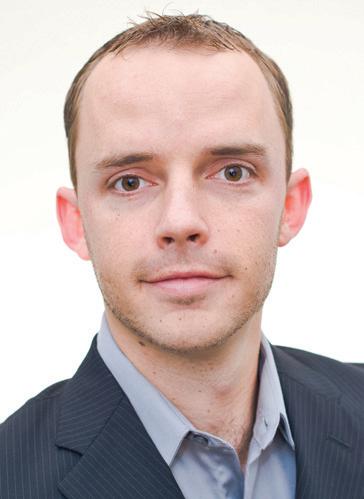
From the Elfin Forest: Head south and turn right on Santa Ysabel. Turn left on 2nd Street and head toward the water. You will see the restaurant on your left.

Keeping track of the things you are grateful for helps decrease stress. According to Barbara Fredrickson, PhD, author of Positivity, “Thinking patterns trigger emotional patterns. So to change emotional patterns, sometimes what we need to do is curtail our negative thinking and stoke our positive thinking.” Don’t take the good for granted, buy a journal, be mindful, and write it down.

According to Power Posing, an article in Psychological Science, people with good posture have more confidence in their own thoughts. (This is just more proof you should listen to your mother’s advice!)

Don’t even think about comparing yourself to other people, just flip the switch and think about your unique strengths.
There’s no shortage of research showing that people who give time, money, or support to others are more likely to be happy and satisfied. In fact, according to Carolyn Schwartz, a research professor at the University of Massachusetts Medical School, those who volunteer experience dramatic improvements in their quality of life—even more so than those they are helping.


with these simple strategies for feeling like the rock star that you are




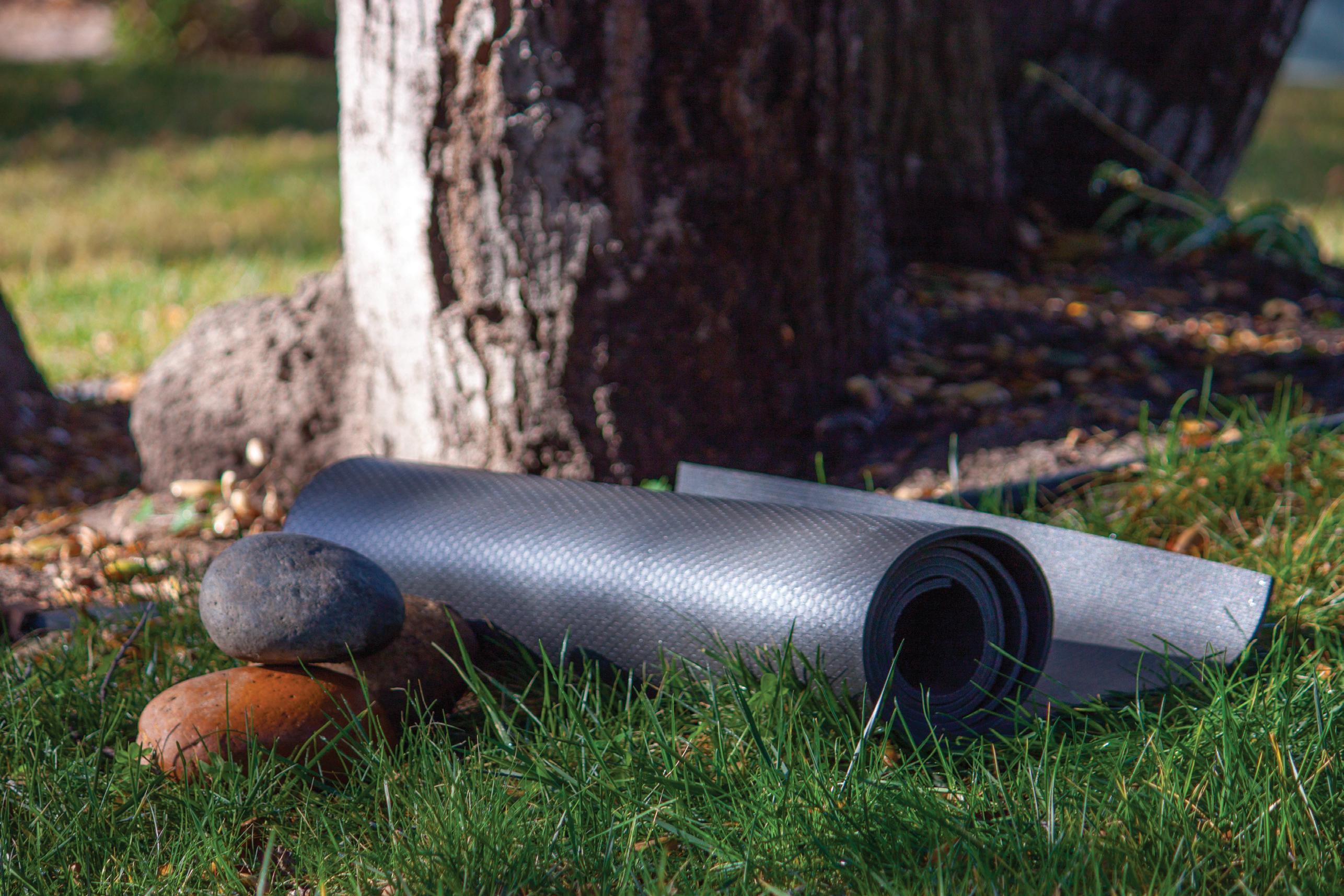


According to Harvard Health Publications, exercising for 20 minutes a day is the easiest way to boost your mood.


Al Siebert, PhD, writes that “highly resilient people are flexible, adapt to new circumstances quickly, and thrive in constant change. Most important, they expect to bounce back and feel confident that they will. They have a knack for creating good luck out of circumstances that many others see as bad luck.” Resilience is not something that you are either born with or not. People feel grief, sadness, and a range of other emotions after adversity and loss. The road to

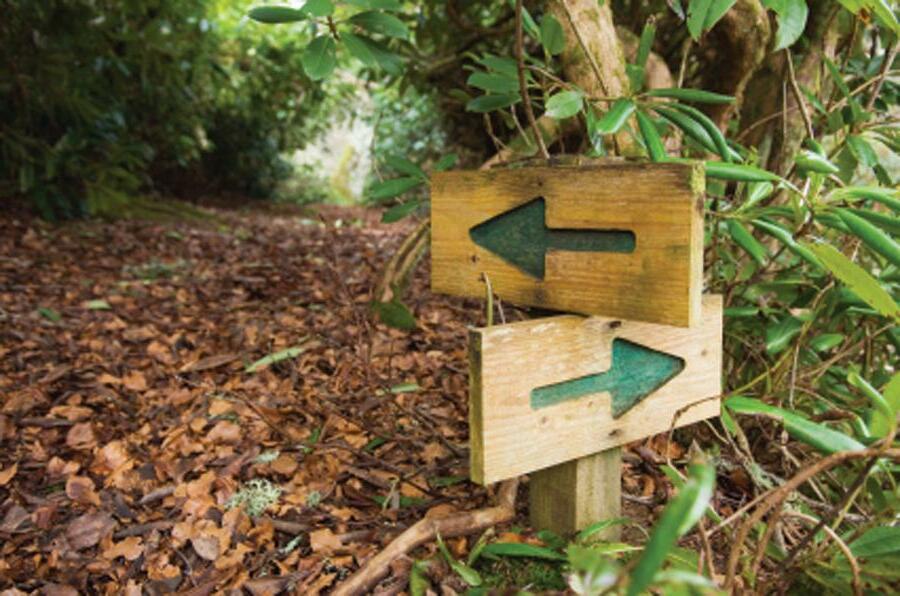
lies in working through the emotions and effects of stress and painful events.





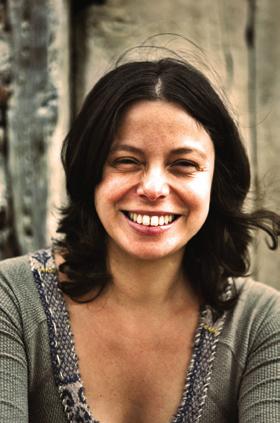



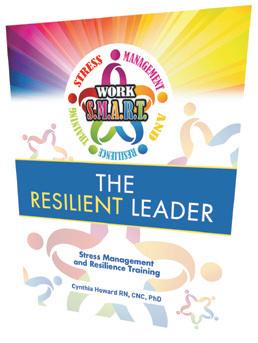


Working toward reasonable challenges increases positive feelings. Whether it’s committing to a weekly music lesson or competing in your first 5k you’ll reap benefits all the way to the finish line.
In improve comedy, they teach you to always agree with whoever starts the scene. Starting your sentence with “yes, and” helps keep the scene moving, as opposed to having someone change the scene with a “no.” Use this strategy to remind yourself that everyone’s opinion is worth considering. Even if you don’t fully agree, just add it to the conversation instead of dismissing it.

The Broaden-and-Build Theory of positive emotions shows a direct link between a wide variety of experiences and your overall positivity. Whether it’s trying a different coffee shop, jumping out of an airplane, or traveling abroad, take the time to seek adventure.






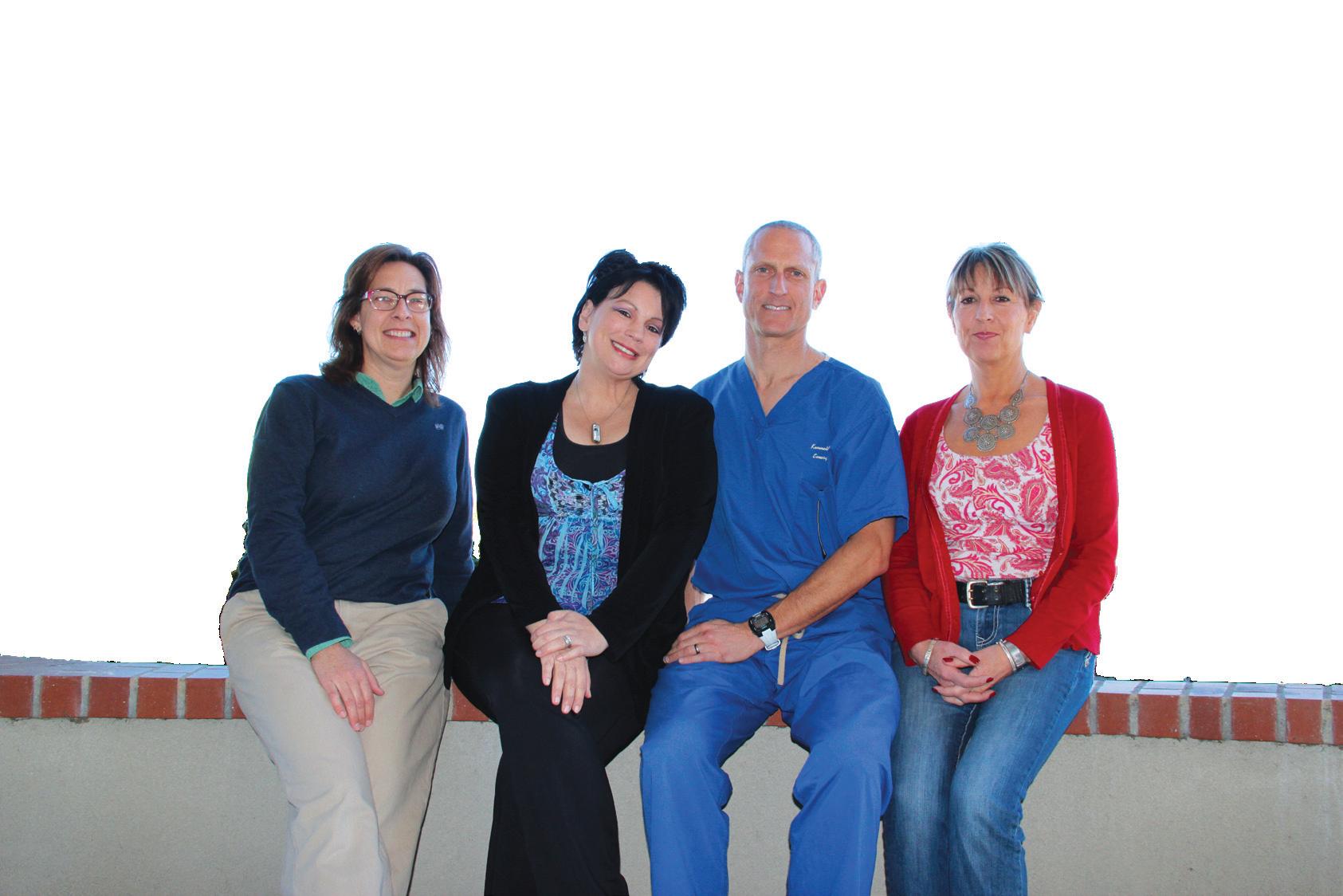




1. There’s a reason Sunset Magazine fell in love with this dish. Perfectly cooked Morro Bay Black Cod over a warm herb tomato salad, wilted spinach, farm-fresh tomatoes with sliced avocado and topped with a prosciutto caponata.

$34 // Windows on the Water Restaurant and Bar 699 Embarcadero, Suite 7, Morro Bay (805) 772-0677 // windowsmb.com
2. Introducing the Creekside Sangria featuring citrus, berries, agave, ginger ale, and brandy mixed with red or white wine. Enjoy the discounted Happy Hour price offered Sunday - Wednesday, 3 - 6pm and all day on Thursday—even during live music which starts at 10pm—and includes sangria, featured wine, well drinks, 2 for 1 beers and a food menu.

$5 // Luna Red 1023 Chorro Street, San Luis Obispo (805) 540-5243 // lunaredslo.com
3. The flavor profile and texture are what make Viognier sing at the table. This Wild Horse selection has beautiful aromas of orange blossom and stone fruit, a full-flavored mouth feel accompanied by fresh, bright acidity and balance.

$20 // Wild Horse Winery & Vineyards 1437 Wild Horse Winery Court, Templeton (805) 788-6300 // wildhorsewinery.com
4. Savor these satisfying Pork Carnitas Sopes crafted from housemade small, thick tortillas, caramelized slow-roasted pork, cabbage, sweet and sour escabeche, salsa, and queso fresco. Enjoy three to a plate. Gluten free. This item is so popular it stays on the menu all year-round.
$18 // Novo Restaurant and Lounge 726 Higuera Street, San Luis Obispo (805) 543-3986 // novorestaurant.com
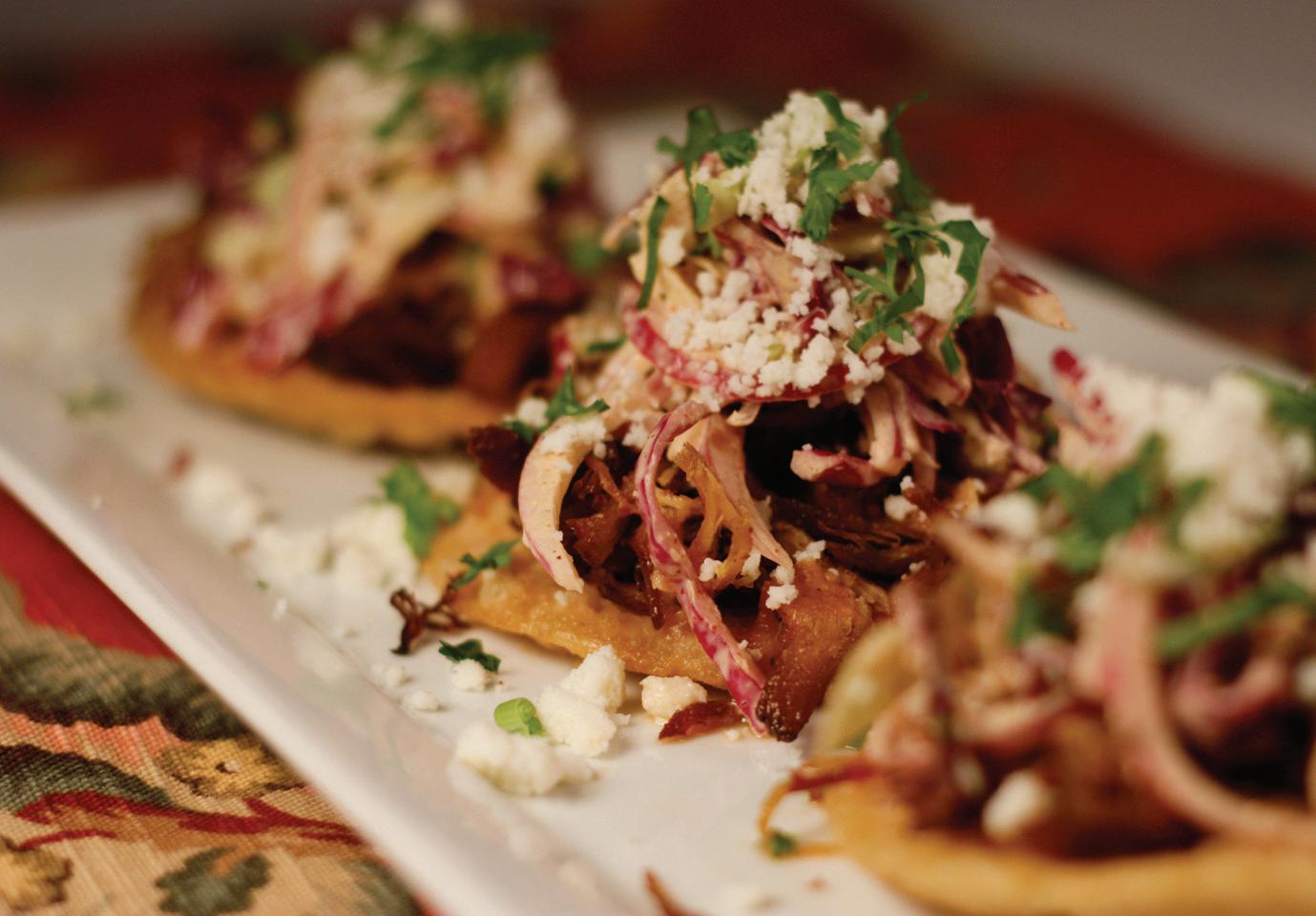
With kale having the reputation as a super food we’re always trying to incorporate more of it into our diet. But the thought of another salad was, frankly, getting old—that is until we added bacon. Inspired by its deliciousness, we went even further with our kale recipe exploration and came up with a pesto sauce that paired beautifully with roasted spaghetti squash.

1 large spaghetti squash olive oil for brushing
1. Preheat oven to 375.
2. Cut spaghetti squash in half; remove seeds and brush with olive oil. Place on baking sheet in preheated oven and bake for 30 –40 minutes until tender and lightly browned. 3. Remove from oven. Scrape the insides with a fork into a serving bowl and separate into spaghetti squash strands.

1. In a high speed blender, combine all ingredients and blend until smooth. 2. Pour into a serving bowl and using a ladel, remove any foam that rises to the top.
of one lemon
We only used about half of our kale pesto sauce for dressing the roasted spaghetti squash. The remaining we used as a delicious spread on sandwiches and as a flavorful veggie dip.
4 slices bacon
1 pound shrimp, peeled and deveined
1 teaspoon red pepper flakes

2 pounds brussels sprouts, thinly sliced
4 cups kale, roughly chopped and veins removed
1 avocado, cubed
4 tablespoons toasted pepitas sea salt and freshly ground pepper
1 lime
1. In a large skillet, cook your bacon until crispy, about 10 minutes. Remove from skillet and place on paper towels to drain. Once cooled, coarsely chop.
2. Using the same skillet, drain the grease until you have about 2 tablespoons remaining.

3. Season shrimp with red pepper flakes. Arrange seasoned shrimp in the skillet and sear both sides until cooked through, 2 – 3 minutes. Season with sea salt and freshly ground pepper. Remove from the skillet and cover to keep warm.
4. Add the brussels sprouts and kale to the skillet. Sauté over medium high heat for 2 minutes. You still want it to have a slight bite, without tasting raw. Season with sea salt and freshly ground pepper.
5. Evenly divide the sautéed sprouts and kale among plates. Top with seared shrimp, avocado, bacon crumbles and toasted pepitas. Squeeze lime juice over each plate to taste.


What do you get when you cross two bachelors and a reincarnated jilted lover in the form of a pizza delivery girl? Bachelorhood shattered in a mad cap, musical romp!

January 23 – March 9 americanmelodrama.com

Moscow Festival Ballet speaks to the soul through the body, performing a magnificent Giselle—Adolphe Adam’s acknowledged 1841 masterpiece, still considered to be one of classical ballet’s most cherished works.
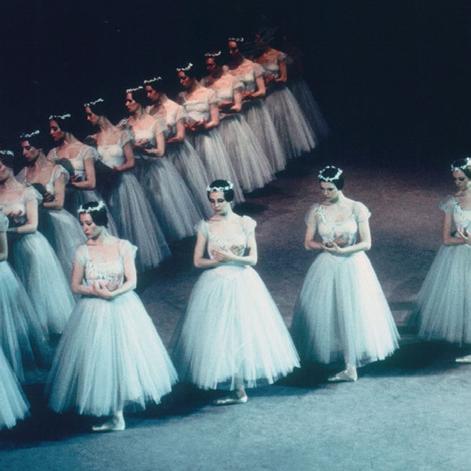
February 8 // pacslo.org



Join us as we present Broadway’s best-loved ensembles and a special sneak preview of the May production of Show Boat featuring an acclaimed quintet of artists each making their debut with Opera San Luis Obispo.
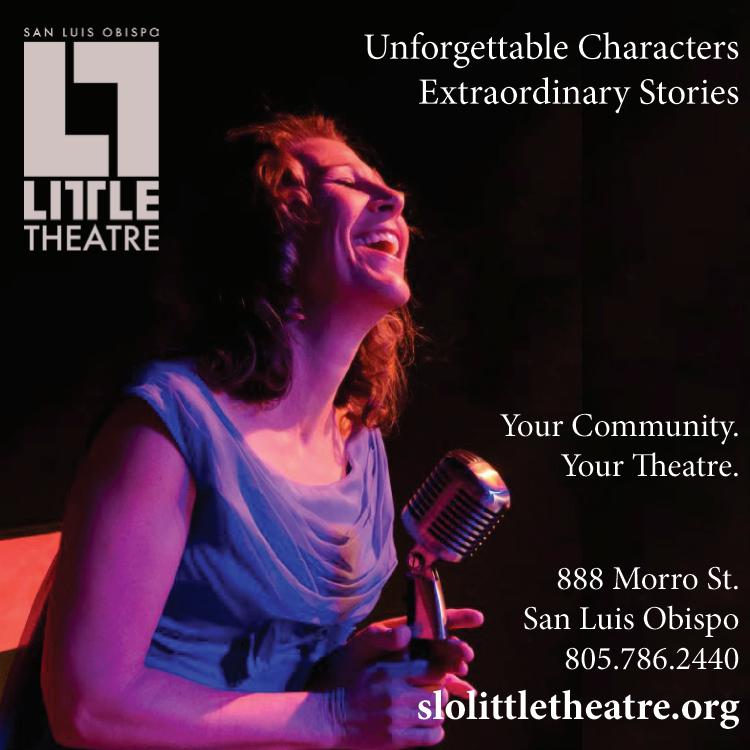

February 9 // www.operaslo.org

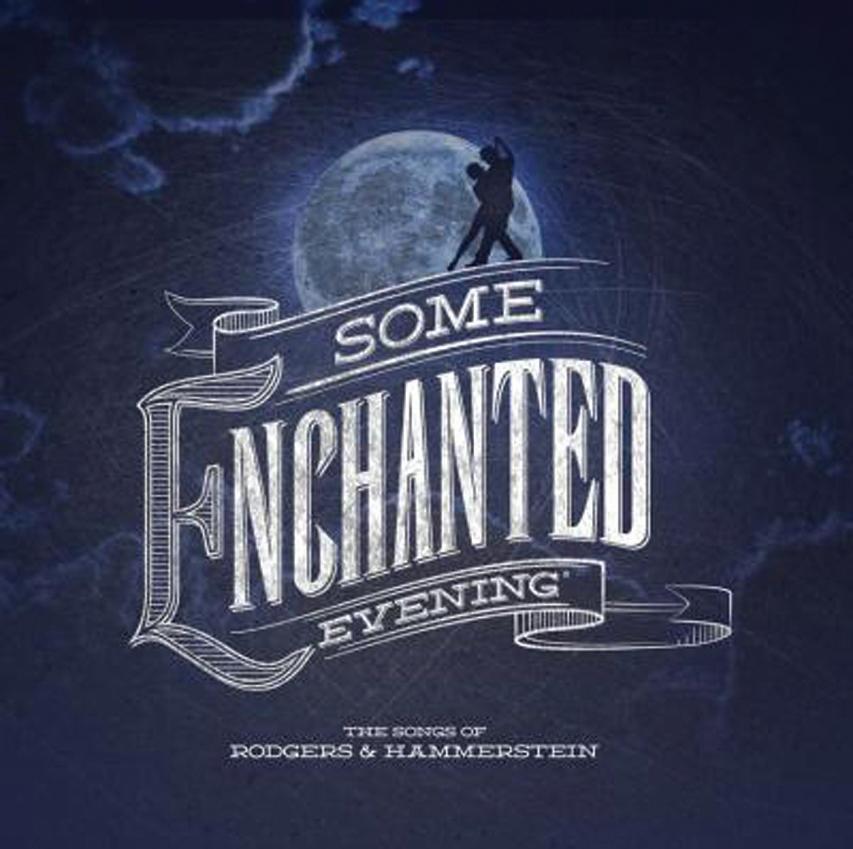

The 20th Anniversary festival is bound to be the best one yet with countywide screenings, behind the scenes workshops and panels, VIP parties and wine tasting.
March 5 – 9 // slofilmfest.org
From the first note to the final breath, West Side Story soars as the greatest love story of all time with one of Broadway’s finest scores. This revival proves that even after 50 years, it remains as powerful, poignant and timely as ever.
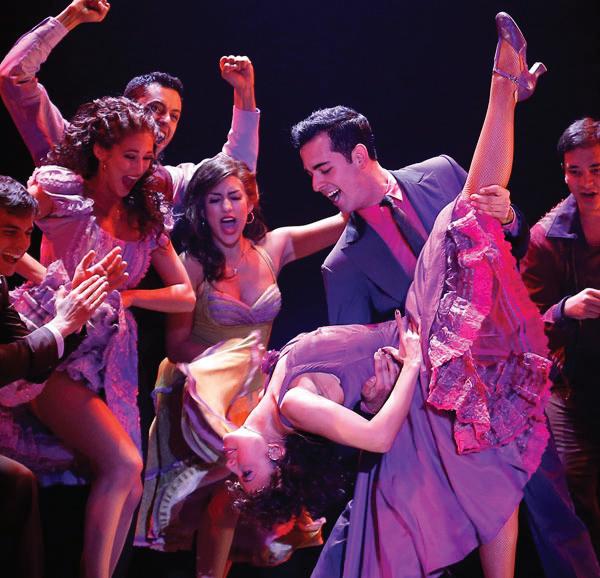
March 10 // pacslo.org
This 5k takes you along the Highway 101 bike path up to Cerro San Luis and back to the Alex Madonna Expo Center. Enjoy beautiful views of the hills and pastures of San Luis Obispo.

March 22 // slohealthandfitness.com
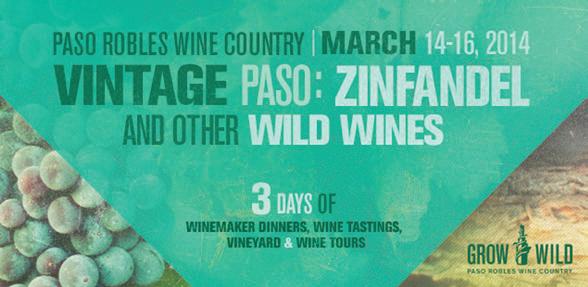
Create your own zinful itinerary to smell, sip and savor the heritage of Paso Robles, with events at more than 120 wineries! Join fellow wine enthusiasts for a selection of wine and chocolate pairings, winemaker dinners, vineyard tours, laid-back barbecues, barrel tastings, live music, and so much more!

March 14 – 16 // pasowine.com

WIVI CENTRAL

This event brings
March 19 – 20 // wivicentralcoast.com




